Tangled & The Hero's Journey By Allison llevat
About tangled.
In the Hero's Jouney, the are three main parts: the departure, the initiation, and the return along with some subparts

The Departure
- Unusual birth : The queen of Corona was pregnant with Rapuzel and got very sick so they brought her a flower that had magical healing powers
- Rapuzel was born with magical hair that healed, made people younger, and glowed when she sang a special song
- They night she was born, a woman named Mother Golthel wanted to say young forever so she stole Rapuzel and kept her in a tower
- Call To Adventure: Since her "mother" never let her out of the tower, Rapuzel had been wanting to explore the outside world
- Every year on her birthday, floating lanterns filled the sky in honor of the lost princess
- She wants to know what they mean
- Crossing the threshold: On her 18th birthday, she asks her mother if she can take her to see the floating lanterns
- A man named Flynn Rider climbs into Rapuzel's tower hiding from the castle guards
- He had stolen the lost princess's crown
- They made a deal that if Flynn takes her to see the floating lanterns, then she would give him the crown
The Initiation
- Supernatural helper/mentor: Flynn Rider (aka Euguene Fitzherbert)
Special weapon : Her hair
- The Abyss or Temptation: Mother Gothel brings Rapuzel back home and traps her and Flynn is caught and put in jail
- Rapuzel finds out she is the lost princess by having a flash back
- Flynn escapes and tries to rescue her but Mother Gothel stabs him
Transformation: Flynn kills Mother Gothel by cutting Rapuzel's hair, Flynn is saved by Rapuzel's tear drop, and Rapuzel is reunited with her family
The Return Home: Rapuzel does not return back to her tower, but instead stays with her family and Flynn
Thanks For Watching!
Made with Adobe Slate
Make your words and images move.
Your report has been submitted.
There was a problem submitting your report. Please contact Adobe Support .
Report Abuse
If you feel that this video content violates the Adobe Terms of Use , you may report this content by filling out this quick form.
- Trademark Infringement
- Offensive Content
- Racist or Hate Content
- Sexually Explicit Content
- Please provide a description of your concern.
To report a Copyright Violation, please follow Section 17 in the Terms of Use .

- school Campus Bookshelves
- menu_book Bookshelves
- perm_media Learning Objects
- login Login
- how_to_reg Request Instructor Account
- hub Instructor Commons
- Download Page (PDF)
- Download Full Book (PDF)
- Periodic Table
- Physics Constants
- Scientific Calculator
- Reference & Cite
- Tools expand_more
- Readability
selected template will load here
This action is not available.

2.1.2.8.5: Article- The Hero’s Journey
- Last updated
- Save as PDF
- Page ID 117900

- Charity Davenport
- University of Tennessee

Before You Read
Discuss the following questions with a classmate.
- What makes someone a hero?
- What do heroes do in movies?
- Why do people love stories about heroes?
- What are some stories you can think of that have a hero?
- Skim the next reading. What do you think is the author’s purpose of the text: to inform, entertain, or to persuade? How will that affect the way you take notes on the reading?
Vocabulary in Context
This article has a lot of useful vocabulary for reading the rest of the chapter and for use in your next essay. Try to guess the vocabulary in bold .
- Chances are this kind of story has been told for millennia , and yet people still love them.
- Many stories that humans have loved throughout time have some interesting patterns, and that there’s a good reason why these kinds of stories strike a chord in us.
- Superhero movies epitomize the hero’s journey and are becoming bigger and bigger blockbusters each year. Even George Lucas himself, the creator of the groundbreaking Star Wars movie series, noted that Joseph Campbell’s book was very influential to him.
- This is the point where the person actually crosses into the field of adventure, leaving the known limits of his or her world and venturing into an unknown and dangerous realm where the rules and limits are unknown.
- The hero may need to fight against foes who are guarding the gate or border of the realm to prevent the hero from coming in.
- While on their way towards their task, the hero might meet some friends, allies , or people willing to help them.
- In between facing ordeals , the hero gets to see more of the fantastic land they are in.
- Not long after she begins her trek on the yellow brick road, Dorothy meets others that will help her on her quest.
- Numerous times she traverses back and forth from Kansas and the land of Oz and other neighboring fantasy lands filled with interesting characters.
- The real reason why ordinary humans like ourselves love these kinds of outlandish storylines is that we want to strive to be heroes ourselves.
Vocabulary Building
Find the word in the paragraph given. Use the synonyms and definition to help.
- P1: surpass, exceed (v.): ______________________________________________________
- P2: a preset pattern (n.): ______________________________________________________
- P4: to be a perfect example of (v.): ____________________________________________
- P5: clearly, in full detail (adv.): _________________________________________________
- P12: a complete and thorough change (n.): ____________________________________
- P14: gentle, kind (adj.): _______________________________________________________
- P17: although (conj.): _________________________________________________________
- P18: equipped (v.): ___________________________________________________________
- P19: a magical or medicinal potion (n.): ________________________________________
- P20: great happiness (n.): _____________________________________________________
- P20: extremely interested (adj.): ______________________________________________
- P27: strange, unfamiliar (adj.): _________________________________________________
- P28: involve (v.): _____________________________________________________________
The Hero’s Journey
Written by Charity Davenport with material from the Wikipedia article “ Monomyth “, $\ccbysa$
Illustrations by W.W. Denslow for L. Frank Baum’s book The Wonderful Wizard of Oz, $\ccpd$
Think about one of your favorite movies or stories. Chances are the story has a strong hero that you empathize with and aspire to become. And chances are this kind of story has been told for millennia, and yet people still love them. These stories transcend time and culture.
In narratology and comparative mythology, the monomyth, or the hero’s journey, is the common template of a broad category of tales that involve a hero who goes on an adventure, and in a critical crisis wins a victory, and then comes home changed or transformed.
The study of hero myth narratives started in 1871 with anthropologist Edward Taylor’s observations of common patterns in plots of heroes’ journeys. Later on, hero myth pattern studies were popularized by Joseph Campbell in his 1949 book The Hero with a Thousand Faces. Campbell and other scholars describe narratives of Gautama Buddha, Moses, and Jesus Christ in terms of the monomyth, and notice that many stories that humans have loved throughout time have some interesting patterns, and that there’s a good reason why these kinds of stories strike a chord in us.
The stages of the hero’s journey can be found in all kinds of literature and movies, from thousands of years ago to now. Superhero movies epitomize the hero’s journey and are becoming bigger and bigger blockbusters each year. Even George Lucas himself, the creator of the groundbreaking Star Wars movie series, noted that Joseph Campbell’s book was very influential to him. The hero’s journey can be found in books like Harry Potter, Lord of the Rings, The Chronicles of Narnia, and most other fantasy sci-fi books, legends, fairy tales, and comic book series like Spiderman and Batman. Many video games like The Legend of Zelda, Skyrim, the Final Fantasy and even the Pokémon series carry many elements of the hero’s journey. But fantasies aren’t real. Why do we love these stories so much? Because the monsters might not be real, the witches might not be real, and the magical objects and fantastic settings might not be real. But the struggle is.
But before we talk about that, we need to dive deeper into the different stages of Campbell’s hero’s journey. The following list of stages also describes stages mentioned by other writers, like David Adams Leeming, who wrote a similar book inspired by Campbell’s book in 1981 called Mythology: The Voyage of the Hero, and Christopher Vogler who published The Writer’s Journey: Mythic Structure for Writers in 2007. As you read, think about examples from stories, movies, or books you have read that might fit these stages. You’ll be surprised. As an example, the story of The Wonderful Wizard of Oz, America’s most well-known mythology written in 1900 by L. Frank Baum, will be used to help explain the stages. There are many stages–not all monomyths necessarily contain all stages explicitly; some myths may focus on only one of the stages, while others may deal with the stages in a somewhat different order. The stages are divided into three parts–departure, initiation, and return.
Part 1: Departure
1: unusual birth.
The hero may have an unusual birth or is born with unique powers. They may be born into a royal family but sent off to live with someone with a more ordinary existence. No matter their birth, something is different about them that lies unknown to others and themselves. They may be isolated by others due to this difference.
2: The Ordinary World / Humble Upbringing
Oftentimes, the story starts out in a world not too different from our own, and in contrast to stage 1, the hero might just be your everyday neighbor down the street. In the case of The Wonderful Wizard of Oz, the main character Dorothy is just a normal American girl living on a farm in Kansas.
3: The Call to Adventure

Suddenly something happens, and the hero is requested to do a task and /or is taken to a new world. For Dorothy, suddenly a tornado comes, but she is unable to get to the underground shelter in time and so runs into the house. The house is taken away into the sky and later lands in a beautifully colored land of tiny people named the Munchkins. The hero may often find themselves in a fantasy land much different from their home at one point or another.
4: Refusal of and Acceptance of the Call
Often when the call is given, the future hero first refuses to heed it. This may be from a sense of duty or obligation, fear, insecurity, a sense of inadequacy, or any of a range of reasons that work to hold the person in his or her current circumstances. Someone may come to help convince the hero that they are the only ones who can do the task, or they are the best person for the job. Eventually, the hero learns that they must be responsible to complete the task at hand.
5: Supernatural Aid / Mentor & Talisman

Once the hero has committed to the quest, consciously or unconsciously, his or her guide and magical helper appears or becomes known. More often than not, this supernatural mentor will present the hero with one or more talismans or artifacts that will aid the hero later in their quest. In The Wonderful Wizard of Oz, after Dorothy finds herself in a magically colorful land filled with strange little people, the good witch Glinda comes to help Dorothy find her way to the Wizard of Oz, who can help her get home. Glinda gives Dorothy a pair of magical silver shoes (ruby slippers in the 1939 movie version)–shoes from the feet of her evil witch sister that has just been crushed by Dorothy’s house falling on her. Glinda appears every so often during the movie version to help Dorothy along the way.
6: Entering the Unknown: Crossing the Threshold
This is the point where the person actually crosses into the field of adventure, leaving the known limits of his or her world and venturing into an unknown and dangerous realm where the rules and limits are unknown. Although Dorothy has already entered a strange land, she is instructed to follow a yellow brick road in order to reach the Wizard of Oz. At this point, she is only following her mentor Glinda’s orders but doesn’t know what she might find along the road, good or bad.
7: First Battle: Threshold Guardian

This may be the first battle they have, usually shortly after crossing the threshold into the other realm. The hero may need to fight against foes who are guarding the gate or border of the realm to prevent the hero from coming in. The first battle represents the final separation from the hero’s known world and self. By entering this stage, the person shows willingness to undergo a metamorphosis. When first entering the stage, the hero may encounter a minor danger or set back. For Dorothy, it was meeting with the Kalidahs, monsters with bodies like bears and heads like tigers–but at least she had some help.
8: Allies / Helpers

While on their way towards their task, the hero might meet some friends, allies, or people willing to help them. Not long after she begins her trek on the yellow brick road, one by Dorothy she meets a scarecrow, tin man, and cowardly lion, all of whom would also like to seek help from the wizard. Here we can see an example of how the stages should not be considered perfect–because Dorothy’s first battle with the Kalidahs happens after this stage, after she meets her allies.
Part 2: Initiation
9: road of trials.

The road of trials is a series of tests that the person must undergo to begin the transformation. Often the person fails one or more of these tests, which often occur in threes. This is usually where the most action lies in the story, with the hero coming upon obstacle after obstacle, maybe winning them all or may suffer a few losses. In between facing ordeals, the hero gets to see more of the fantastic land they are in. In The Wonderful Wizard of Oz, Dorothy and her three allies face many barriers on their way to the wizard–one of which is a field of poppies that makes some of them fall asleep. Campbell writes, “The hero is covertly aided by the advice, amulets, and secret agents of the supernatural helper whom he met before his entrance into this region. Or it may be that he here discovers for the first time that there is a benign power everywhere supporting him in his superhuman passage.” Through many of Dorothy’s obstacles, she is helped by the people in the different lands she travels through. A giant group of mice helps bring sleeping Dorothy and the lion out of the poppy field to safety.
10: Meeting with the Goddess / Temptress

Along the way, the hero may meet a woman who helps him or may also tempt him to wander away from his path. The meeting with the goddess does not need to be female nor a goddess, but it sometimes involves a romantic relationship with the hero. It could be anyone who helps the hero or gives items to him that will help him in the future. In Dorothy’s case, the goddess here is the wizard. Finally, Dorothy and her crew reach the land of Oz where the wizard lives to ask of him what they desire, with Dorothy’s wish to simply go back home to Kansas. But instead, the wizard will only help her if she agrees to kill the wicked witch of the West and bring back her broomstick.
The woman as temptress has the opposite effect. In this step, the hero faces temptations, often of a physical or pleasurable nature, that may lead him or her to abandon or wander from his or her quest, which does not necessarily have to be represented by a woman. Woman is a metaphor for the physical or material temptations of life, since the hero-knight was often tempted by lust from his spiritual journey.
11: Brother / Father Battle: The Final Showdown

In this step, the person must finally face whatever holds the ultimate power in his or her life, usually the villain or antagonist of the story. In many myths and stories, this is the father or a father figure who has life and death power. This is the center point of the journey. All the previous steps have been moving into this place, and it’s usually the ultimate goal of the hero, and all that follow will move out from it. Although this step is most frequently symbolized by an encounter with a male, it does not have to be a male; just someone or thing with incredible power. In Dorothy’s case, this is meeting with the wicked witch of the West, who Dorothy successfully (albeit accidentally) kills and takes her broomstick.
12: Apotheosis
This is the point of realization in which a greater understanding is achieved. Armed with this new knowledge and perception, the hero is resolved and ready for the more difficult part of the adventure, which for Dorothy is simply going home. In this stage, the hero is also finally recognized as a hero by the people of the realm they are in and the people of their homeland. They may even be immortalized as a god towards the end of the story. Having killed two evil witches that enslaved the beings of their realms, there are many in the magical land that see Dorothy as a powerful hero.
Part 3: Return
13: the ultimate reward.
The ultimate reward is the achievement of the goal of the quest. It is what the person went on the journey to get. All the previous steps serve to prepare the person for this step, since in many myths the reward is something that has supernatural powers, like an elixir of life, or a plant that makes one immortal, or the holy grail. Sometimes it’s the completion of the quest, like killing a monster that has been attacking the town. Unfortunately for little Dorothy, she doesn’t get what she wanted after fulfilling the wizard’s request because they learn that the wizard doesn’t have any magical powers to help them. Once again they must journey, this time to her mentor Glinda, to find out how to get home again.
14: Refusal to Return
Having found bliss and enlightenment in the other world, the hero may not want to return to the ordinary world to present the reward onto his fellow man. Although a while ago the hero was entering an unknown world, it has become familiar to them, they have made many friends and accomplishments, and thus they may not want to leave to go back home. This is definitely the case for Dorothy, who although frightened yet intrigued by this strange magical land, made lots of new friends, met interesting and helpful strangers, and learned that “home is where the heart is.”
15: Magical Flight / Rescue from Without

Sometimes the hero must escape with the reward, especially if it is something that the gods have been jealously guarding. It can be just as adventurous and dangerous returning from the journey as it was to go on it. This can also be another adventure the hero must complete just to escape the magical land. Now that Dorothy has a new quest to find Glinda, she once again finds ordeals blocking the way and monsters to fight. Dorothy uses the power of a magic cap to call flying monkeys to take her to certain places.
Just as the hero may need guides and assistants to set out on the quest, often he or she must have powerful guides and rescuers to bring them back to everyday life, especially if the person has been wounded or weakened by the experience.
16: The Return Threshold: Home Again

The trick in returning is to retain the wisdom gained on the quest, to integrate that wisdom into a human life, and then maybe figure out how to share the wisdom with the rest of the world. Once Dorothy finally accomplishes her new goal of finding Glinda, Glinda tells Dorothy that what she needed to return home was with her all along–the magical silver (or ruby) shoes on her feet. The others also learned that everything they desire was within them all along. Dorothy learns that home is always where you want it to be.
17: Master of Two Worlds / Restoring the World
This step is usually represented by a transcendental hero like Jesus or Buddha. For a human hero, it may mean achieving a balance between the material and spiritual. The person has become comfortable and competent in both the inner and outer worlds. For the Dorothy in the Oz novels, numerous times she traverses back and forth from Kansas and the land of Oz and other neighboring fantasy lands filled with interesting characters.
18: Freedom to Live
Mastery leads to freedom from the fear of death, which in turn is the freedom to live. This is sometimes referred to as living in the moment, neither anticipating the future nor regretting the past. Essentially, this is the hero’s “happily ever after.” Now the hero has returned home and probably faces a triumphant crowd cheering their return. Now they can rest and enjoy their life, until next time…
Were you thinking of a movie or a story while reading the three stages? Which stages could you easily point out in the story? Which were missing? And how does that affect the story’s plot? It’s just as important to point out the differences in stories as it is to see the patterns found in Campbell’s monomyth. You should do the same for the rest of the stories in this unit. As you read the stories, try to see which stages are represented and which aren’t.
The Monomyth: Not Just for Mythology
Earlier we mentioned that the popularity of the monomyth is not so much in the fantastical aspects. The real reason why ordinary humans like ourselves love these kinds of outlandish storylines is that we want to strive to be heroes ourselves. We might not be slaying monsters, but human life involves facing and defeating obstacles all around us. We sympathize with a hero in trouble, suffering, doubting his abilities, because we know this kind of struggle personally. We are the heroes in the story of our lives. Think of yourself– as an international student, as an immigrant in a strange land, the struggles, the victories, the obstacles, the sacrifices, the losses you have experienced, how all of those experiences have transformed you, and the ultimate goal you are working towards.
Not only has the monomyth inspired stories for generations, but it has inspired other fields. Some self-help books encourage people to look at their own hero’s journey as a kind of therapy and encouragement. The stages of the hero’s journey have been used to encourage entrepreneurs starting their own businesses–the risks it might entail, and what to do when facing difficult situations. There is even a hero’s journey fitness program to help people lose weight and gain confidence, and a book for teachers–the heroes of strange lands called “the classroom.” Not only is the monomyth an interesting theory behind some of the most popular adventure stories on Earth, it is the story of life itself.
Comprehension Questions
Answer the following questions based on the article about the hero’s journey.
- Give a short paragraph summary (no more than 5 sentences) of the hero’s journey.
- Why has the monomyth stayed popular for thousands of years?
This chart will be used often to focus on how each of the adventure stories we read follows Campbell’s idea of the “hero’s journey”. Summarize the steps in the hero’s journey in the chart below.
CEFR Level: CEF Level B2
The Hero's Journey: Crossing the Threshold
Moviepix / Getty Images
- Tips For Adult Students
- Getting Your Ged
:max_bytes(150000):strip_icc():format(webp)/Deb-Nov2015-5895870e3df78caebc88766f.jpg)
- B.A., English, St. Olaf College
The hero , armed with the mentor’s gifts , agrees to face the journey. This is the turning point between Act One and Act Two, the crossing from the ordinary world into the special world. The hero is wholeheartedly committed and there is no turning back.
According to Christopher Vogler's The Writer's Journey: Mythic Structure , crossing the first threshold is often the result of some external force that changes the course or intensity of the story: someone is kidnapped or murdered, a storm hits, the hero is out of options or pushed over the brink.
Internal events might also signal the crossing of a threshold: the hero’s very soul is at stake and he makes a decision to risk everything to change his life, Vogler writes.
The Threshold
Heroes are likely to encounter threshold guardians at this point. The hero’s task is to figure out some way around these guardians. Some guardians are illusions and the energy of others must be incorporated by the hero, who realizes that the obstacle actually contains the means of climbing over the threshold. Some guardians simply need to be acknowledged, according to Vogler.
Many writers illustrate this crossing with physical elements such as doors, gates, bridges, canyons, oceans, or rivers. You may notice a clear shift in energy at this point.
A tornado sends Dorothy to the special world. Glinda, a mentor, begins teaching Dorothy the rules of this new place, gives her the magical ruby slippers, and a quest, sending her over a threshold where she will make friends, confront enemies, and be tested.
Tests, Allies, Enemies
The two worlds have a different feel, a different rhythm, different priorities and values, different rules. The most important function of this stage in the story is the testing of the hero to prepare her for the ordeals that lie ahead, according to Vogler.
One test is how quickly she adjusts to the new rules.
The special world is usually dominated by a villain or shadow who has set traps for intruders. The hero forms a team or a relationship with a sidekick. She also discovers enemies and rivals.
This is a "getting to know you" phase. The reader learns about the characters involved, the hero accumulates power, learns the ropes, and prepares for the next phase.
- The Role of Archetypes in Literature
- The Ordinary World in the Hero's Journey
- The Reward and the Road Back
- The Approach to the Inmost Cave in the Hero's Journey
- The Resurrection and Return With the Elixir
- The Hero's Journey: Meeting with the Mentor
- An Introduction to The Hero's Journey
- The Ordeal in the Hero's Journey
- The Hero's Journey: Refusing The Call to Adventure
- Russian Folklore: Baba Yaga as a Symbol of Mother Nature
- "The Wonderful Wizard of Oz" Study Guide
- The Heroes of Ancient Greece and Rome
- The Argonauts
- Ulysses (Odysseus)
- How Did the Greek Hero Hercules Die?
- Meaning Behind the Phrase to Cross the Rubicon
Jump to navigation

Search form
- Course Overview
- Areas of Study
- Entry Requirements
- Production Allowances
- Graduate Achievements
- Application Process
- Selection Process
- Admissions Criteria
- English Language Requirements
- International, EU, EEA, Swiss Students and Visas
- Accreditation of Prior Learning
- Additional Information
- Appeals and Complaints
- Deadlines and Late Applications
- Academic Year and Term Dates
- Description of LFS facilities
- Student VLE (Moodle)
- Disability statement
- Studying in London
- Student Accommodation
- Why LFS - 10 reasons why students choose LFS
- General Living Costs
- Financial Support
- Chevening Scholarships
- Funding For International Students
- Funding in the UK
- Leverhulme Trust Arts Scholarships
- Postgraduate Masters Loans
- US Federal Student Aid
- Directing Summer School with Udayan Prasad
- Beginners Summer School
- Global Names from LFS
- Graduates Map
- Find Filmmakers
- Honorary Associates
- Event Calendar
- Office for Students (OfS)
- Policies and Regulations
- Student Protection Plan
- Industry Advisory Groups
- Job Vacancies
- Change of Contact Details - Students and Alumni
- Replacement for ID Cards, LFS Diplomas and Certificates
- Scholarships
Twitter Facebook Youtube GooglePlus
The Hero’s Journey or The Wanderer Dream: Tangled perspectives in Embrace of the Serpent

Tales of adventure and exploration in the jungle have long captured the Western imagination. Sailing down river from familiarity into mystery is a typical story which provides a perfect frame for the Hero’s Journey, a structure of myth popularised by Joseph Campbell in the 1940s. Described by him, the Hero’s Journey is a recurring story which follows a single narrative pattern :
“A hero ventures forth from the world of common day into a region of supernatural wonder: fabulous forces are there encountered and a decisive victory is won: the hero comes back from this mysterious adventure with the power to bestow boons on his fellow man.”
Campbell suggests that this is a myth shared by various cultures. Yet most of these stories, and the theory behind the monomyth itself, are subject to an occidental perspective.
The original intention for The Embrace of the Serpent was to create a film that would be historically representative of life in the Amazon. In his research, Colombian director Ciro Guerra initially drew from two Western travel diaries. These historical accounts were celebrated for being the first to humanise the Amazonian peoples and were influential in challenging established racist depictions. However, after working directly with Amazonian communities, Guerra realised that any adaptation of a historical account would not be able to rid itself of the Western perspective that originally wrote it.
In order to avoid any reproduction and be truly faithful to the underrepresented perspective, his script would have to get creative.
“I had to stop being faithful to the ‘truth’,” he said in an interview with Cineaste , “because to them [the Amazonian communities], the ethnographic, anthropological, and historical truths were as fictional as imagination and dream, which for them was valid. The historical film needed to contaminate itself with Amazonian myth.” He could not faithfully and respectfully tell an Amazonian story without blending history with fiction. The result is a film that combines Western stories with an Amazonian imagination, one which disrupts the typical Hero’s Journey and creates a far more ethereal and transcendent narrative.
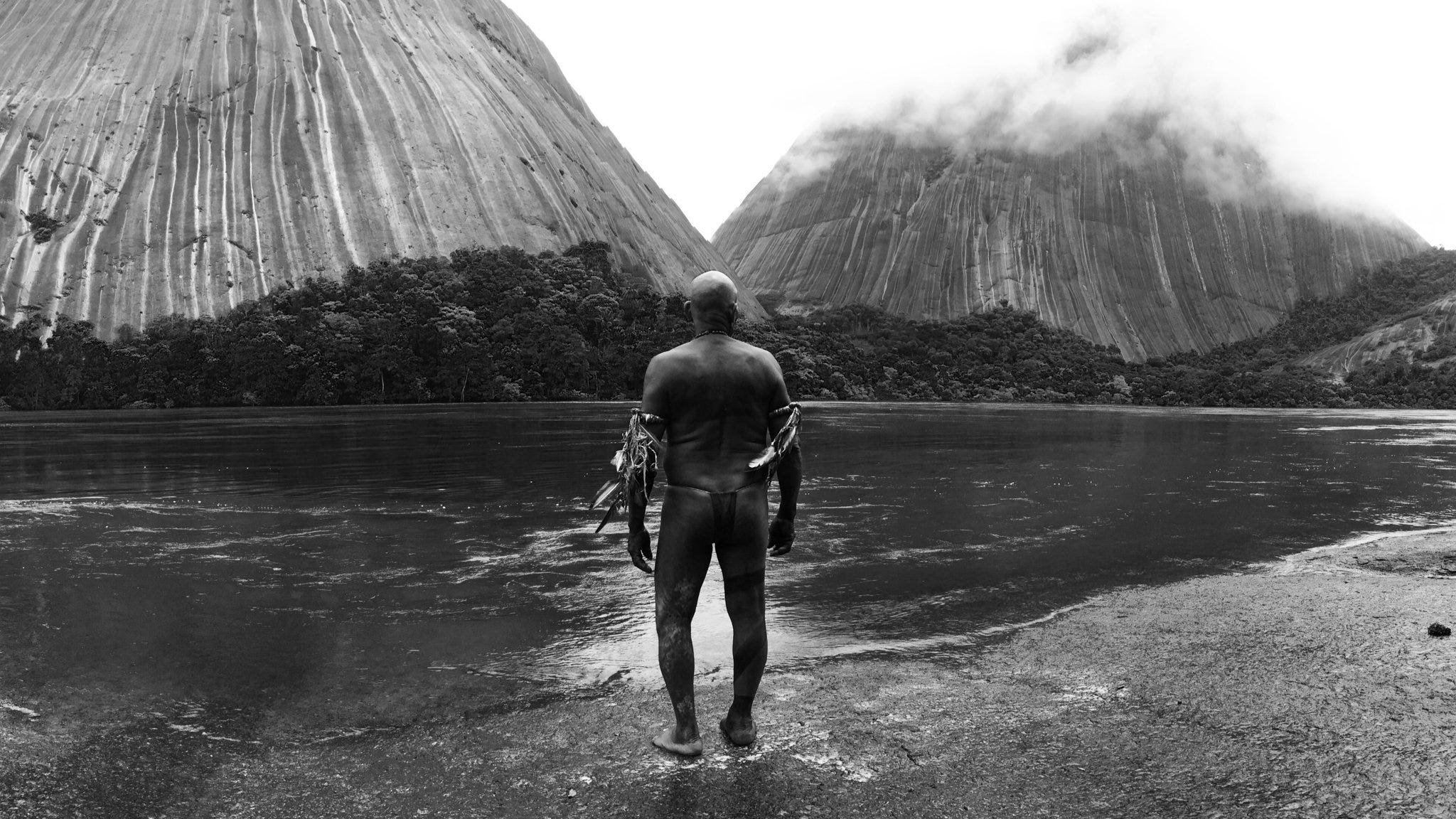
It opens on Karamakate, a lone shaman, as he is visited by Theodore von Maritus, an elderly ethnographer (based on Theodore Koch-Grünberg, author of the first diary). He presents Karamakate with the typical Campbellian Hero’s Journey. Theo is deathly sick and needs Karamakate to take him to the location of a medicinal plant called yakruna, where he also claims Karamakate will find the last of his people. Theo knows where the yakruna is, but only Karamakate knows how to prepare and administer its medicine.
This journey is to be a collaborative one, and the ‘boons’ bestowed on fellow men are not in treasure, but knowledge. Karamakate is stalwart in his dedication to traditions and he will soon learn that without his guidance his people, subject as they are to the all-consuming power of colonial capitalism, are in danger of forgetting them.
On their way, they stop at the village of another tribe. There, Theo loses his compass, and upon discovering that it was stolen by the chief he demands, unsuccessfully, to have it back. Karamakate berates him,
“You don’t own knowledge. Knowledge belongs to all men.”
To which Theo retorts that if they learn to use the compass they will forget how to navigate by stars and river, as they have done forever; that the introduction of his knowledge can also mean the eradication of theirs.
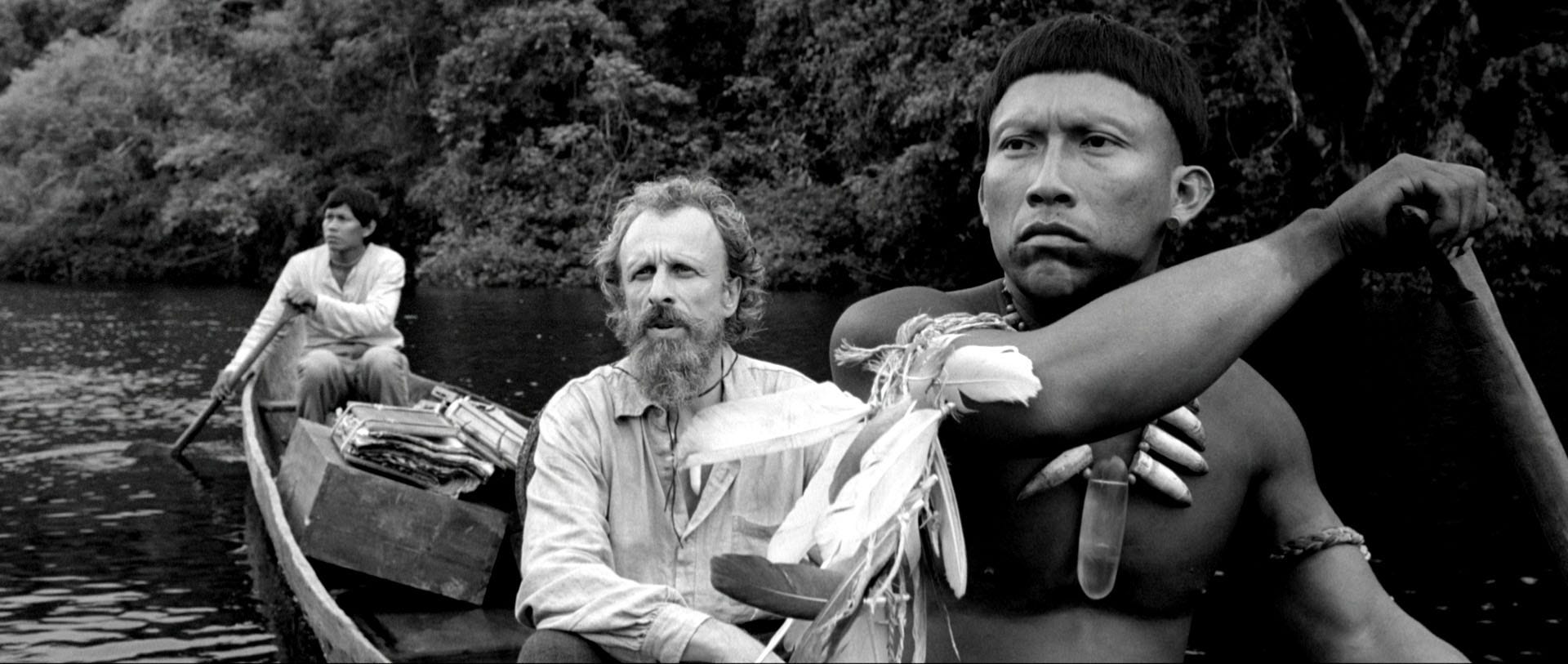
Perhaps Theo knows what awaits them at the site of the yakruna. When they arrive, Karamakate finally sees the scale of the corruption. Karamakate’s people normally practice prohibitions to keep balance with the jungle. Under the rule of the colonial settlers, it’s implied everything is allowed in excess. His people are alive but unrecognisable; afflicted with alcoholism, and consuming the sacred yakruna unreservedly, as little more than a drug. His people have been cut loose from their indigenous traditions and knowledge, and Karamakate learns that he cannot undo this damage. In a rage, he chooses to burn the last of the yakruna rather than see the likes of Theo corrupt it, and his people, any further.
Their collaboration ends, he leaves Theo to die, and his journey fails.
Guerra has explained that yakruna is fictional but based upon other plants like ayahuasca that are considered gifts from the Anaconda, key to the Amazonian creation myth. These plants have properties that we would consider hallucinogenic, and therefore were often used recreationally by Westerners. But, traditionally, they were consumed as a means to communicate with the Creator, or to embrace the serpent; “it takes you to a faraway place, before life existed and you can get a new perspective of the world.” The plant grants access to a mystical knowledge, one which can only be understood through a lived experience.
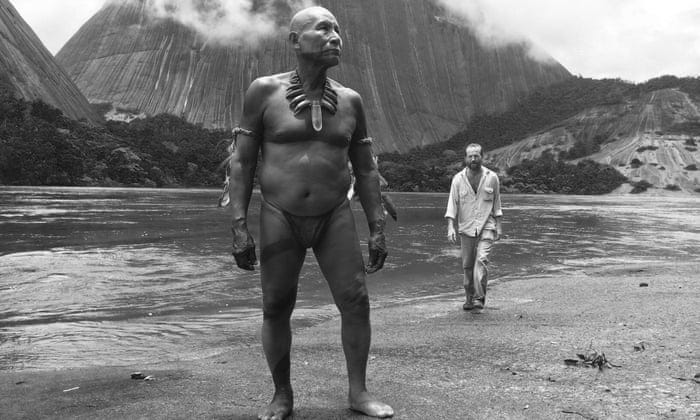
Decades later, an elderly Karamakate tries to explain this to another Westerner also searching for yakruna, in the film’s closest Amazonian equivalent of a traditional Hero’s Journey. After consuming the plant, a warrior “must abandon all and go alone into the jungle, guided only by their dreams. In this journey, he has to find out, in solitude and silence, who he really is. He must become a wanderer dream.”
Karamakate can no longer take this journey as he cannot remember how to prepare yakruna. As Theo had warned, he has forgotten too many things and believes he’s caught between a disappearing world and an emerging one he cannot understand. He describes himself as a Chullachaqui,
“Like a ghost, lost in time, without time.”
He asks Evan, the Westerner, (based on Richard Evan-Schultes, author of the second diary) to do this in his stead, as he now believes
“If we cannot get the whites to learn it will be the end of everything.”
But Evan has no interest in this. He is searching for yakruna to complete his own Hero’s Journey.
In a total reversal of the previous roles, it is Evan who knows how to prepare yakruna, and Karamakate who leads him to it. Evan appears to be colonialism’s victory made manifest; armed with both a stolen indigenous knowledge and modern technology. Evan wants to prepare yakruna to grow as rubber, then cultivate it for use in the US war effort. Evan’s Journey will allow him to further rationalise the ‘smash and grab’ effect of colonialism, and his heroism will justify it.
However, as lost as he may be, Karamakate has always been aware of the jungle’s mysticism. For all that Evan seems to be superior to the elderly Karamakate, all of his knowledge is limited to a scientific, or anthropological logic. A logic that Karamakate is able to challenge:
“‘How many sides does the river have?’
‘How do you know?’
‘It has one. And then another.’
‘How do you know? The river has thousands of sides.’”
It’s an example of how Western logic can take for granted something which, from a different perspective, is far more complicated. In their own way, both men are right; they’re just approaching the question from two different angles.
Guerra was inspired by his experience researching the film where he learned that the Indigenous communities have over fifty words for the colour Green . He had wanted to make the entire film from this expanded Indigenous perspective but he worried it would make he film “incomprehensible.” Instead, the film would have to be a ‘bridge’ between cultures and this is best revealed in its structure.
The two narratives are not split chronologically, but are shown in tandem, with the river used as a time travelling motif allowing the story to literally flow back and forth through time. This structure creates an overarching mysticism, one that’s lost on the scientists and even the young Karamakate, but not to the elder caught out of time. “You are not one — you are two men,” he says of Theo to Evan. Despite both Westerners being physically different and historically separate this is a logic that makes complete sense to any audience.
The similarities between the two men also make it clear to the audience that Evan’s Journey was bound to fail. Most symbolically when Karamakate instructs both men to cast aside their belongings: books, papers and photographs, physical manifestations of their collected knowledge. While Theo refuses, Evan begrudgingly accepts, unaware that he’s swapping material knowledge for an experience more akin to the warrior’s journey Karamakate described.
Evan is ultimately denied the opportunity to collect and cultivate yakruna, but is allowed to consume it and embrace with the serpent.
Evan’s yakruna-induced vision ends the film in a spectacular psychedelic sequence. Most significantly it does not explain what Evan ‘sees’; that is not its purpose. Guerra wanted the film to engage the viewer’s imagination; it is enough that Evan, and by extension the audience, saw anything at all. The sequence is the film’s only use of colour and after hours in a monochrome world, it perfectly conveys to the audience that it’s possible to expand perspective. Perhaps this is the culmination of a third and more meta journey; one that is realised through the act of watching the film. The film reveals how the Hero’s Journey, in the context of colonialism, can justify the reduction of complex cultures for the benefit of Western science and medicine. This is a damage which cannot be undone. However, with Embrace of the Serpent, Ciro Guerra has given the world one of the most beautiful, cinematic, and mysterious invitations into an expanded and shared perspective; one with the power to heal.
Breaking Down the Character Archetypes of the Hero’s Journey
You’ve read about George Lucas’s use of Joseph Campbell’s Monomyth found in his 1949 book, A Hero with a Thousand Faces , which is a common narrative pattern found in many stories from many different cultures worldwide. This narrative journey typically involves several character archetypes that affect the hero’s journey from beginning to end.
After the successful debut of Star Wars and Lucas’s discussions on using Campbell’s work as inspiration for his space opera, many producers, development executives, filmmakers, and screenwriters have explored the Monomyth with deeper and simplified approaches.

Christopher Vogler's Interpretation of the Hero's Journey
When Christopher Vogler, a development executive and screenwriter at Disney, was inspired by Joseph Campbell's concept of the story monomyth, he crafted a seven-page memo for Disney's development team and incoming screenwriters.
This memo, A Practical Guide to Joseph Cambell’s The Hero with a Thousand Faces , laid the groundwork for what would later become Vogler's 1992 book, The Writer's Journey: Mythic Structure for Storytellers and Screenwriters . In this book, Vogler expanded upon Campbell’s ideas.
He adapted Campbell's mythical story structure into twelve distinct stages (from Campbell’s initial seventeen). Our concise interpretations of these stages include:
- The Ordinary World : We see the hero's normal life at the start of the story before the adventure begins.
- Call to Adventure : The hero faces an event, conflict, problem, or challenge that makes them begin their adventure.
- Refusal of the Call : The hero initially refuses the adventure because of hesitation, fear, insecurity, or any other issues.
- Meeting the Mentor : The hero encounters a mentor who can give them advice, wisdom, information, or items that ready them for the journey ahead.
- Crossing the Threshold : The hero leaves their ordinary world for the first time and crosses the threshold into adventure.
- Tests, Allies, and Enemies : The hero learns the rules of the new world and endures tests, meets friends, and comes face-to-face with enemies.
- The Approach : The initial plan to take on the central conflict begins, but setbacks cause the hero to try a new approach or adopt new ideas.
- The Ordeal : Things go wrong, and added conflict is introduced . The hero experiences more difficult hurdles and obstacles, some of which may lead to a life crisis.
- The Reward : After surviving The Ordeal, the hero seizes the sword — a reward that they've earned that allows them to take on the biggest conflict. It may be a physical item or piece of knowledge or wisdom that will help them persevere.
- The Road Back : The hero sees the light at the end of the tunnel, but they are about to face even more tests and challenges.
- The Resurrection : The climax. The hero faces a final test, using everything they have learned to take on the conflict once and for all.
- The Return : The hero brings their knowledge or the " elixir " back to the ordinary world.
Within these stages are character archetypes that help to shape the hero’s journey, and their eventual character arc throughout the story.
Read More: Exploring the Twelve Stages of the Hero’s Journey
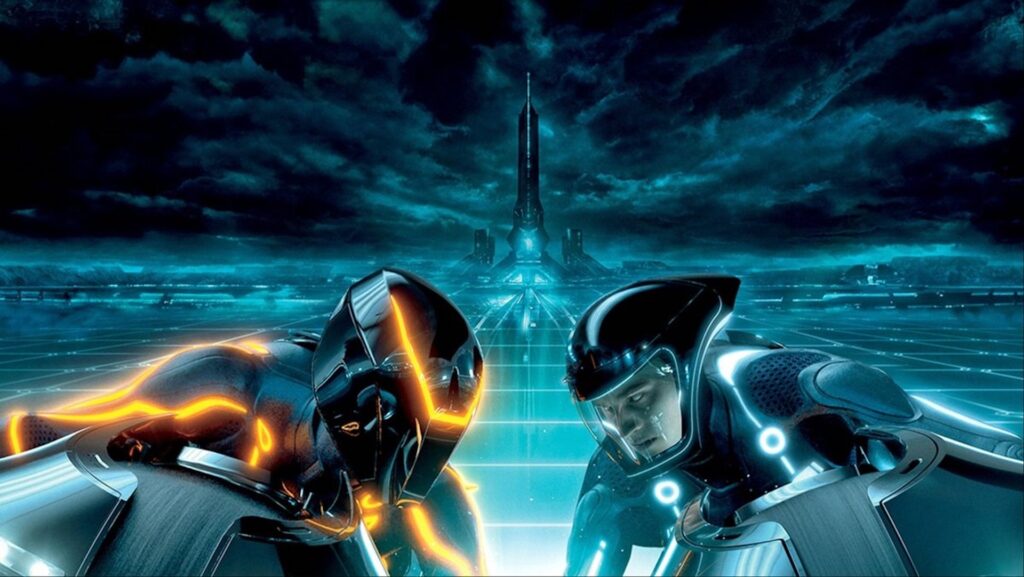
'Tron: Legacy' (2010)
What Are Character Archetypes?
A character archetype is a common recurring representation of a character that embodies a set of universal and recognizable traits or characteristics. These archetypes are seen throughout literature, film, and other storytelling mediums—and they resonate with audiences because they are based on common human experiences or cultural norms.
Archetypes work well because they are instantly recognizable to readers and audiences. For writers, character archetypes can be adapted and molded with ease during character development.
Character archetypes are not specific characters in a story but rather broad categories or templates that individual characters can be based on or inspired by. They represent typical roles characters play in the narrative, and their actions and motivations are often predictable based on the archetype they represent.
However, writers can also choose to subvert those expectations to create a more dynamic character , as well as introduce much-needed twists and turns within the story.
Read More: 10 Character Archetypes in Comedies
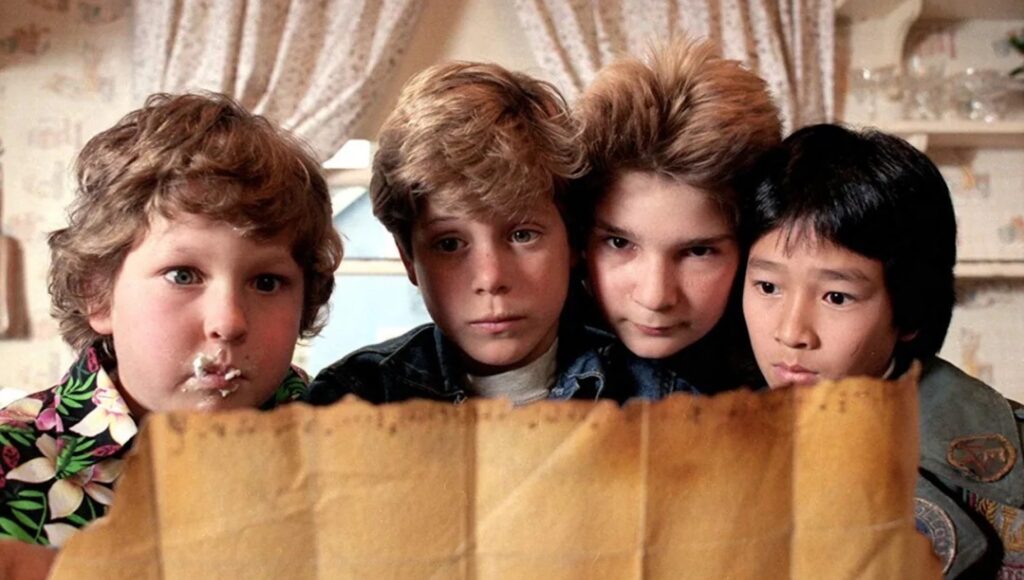
'The Goonies' (1950)
The benefits of using character archetypes include:
- Universality : Archetypes are universally understood and have similar meanings across cultures and historical contexts. This can especially help in the cinematic realm as movies are released in multiple countries and languages.
- Symbolism : These character traits can symbolize a particular aspect of human experience or life. Once again, symbolism is identifiable across many cultures.
- Predictability : Because they are based on common patterns, their behaviors and roles in stories can often be anticipated . Because of that anticipation, writers can choose between subverting those expectations or using the predictability of the archetypes to service the story and protagonist with ease.
- Variability : While archetypes are typical patterns, they allow for variations and depth, meaning a single archetype can manifest in different ways across various stories, allowing writers can adapt these traits to any character.
Character archetypes can be used as tools to tell a compelling and universal story.
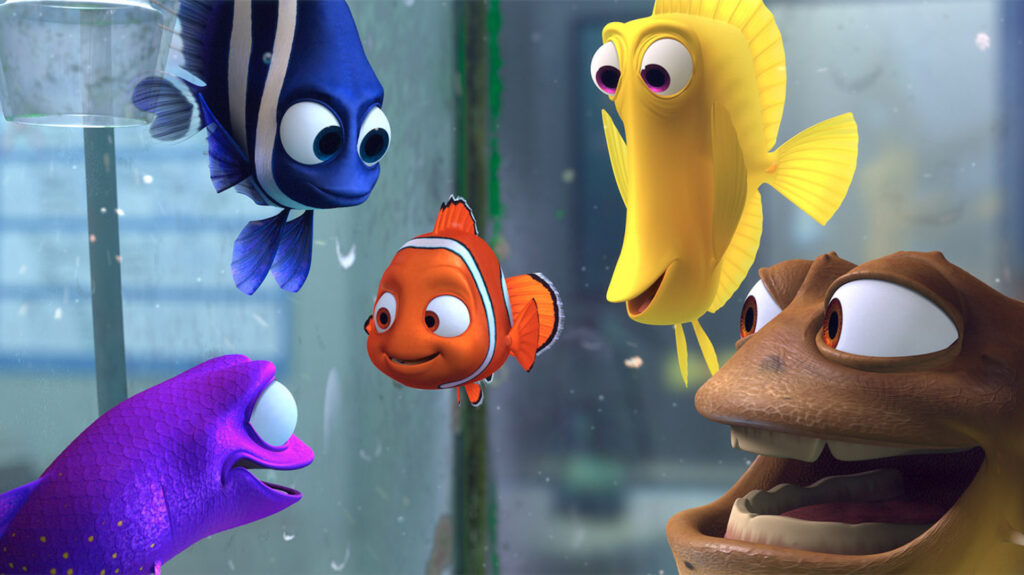
'Finding Nemo' (2003)
What Are the Character Archetypes in the Hero's Journey?
Many archetypes in the hero's journey—the threshold guardian, the herald, the shapeshifter, the trickster, the ally, and the tempter/temptress—are more defined in later interpretations and expansions of Campbell's work. People like Vogler applied his theories to modern storytelling so writers, readers, and audiences could more easily understand the dynamics of Campbell’s monomyth.
Here, we’ll break down the main character archetypes in the hero's journey utilized in Campbell’s Monomyth and Vogler’s expanded breakdowns and interpretations.
The hero is the central figure of the story (protagonist) who undergoes a journey, facing challenges and transformations. The hero often starts as an ordinary person who is then called to adventure. They are present throughout the entire journey , from the ordinary world to the return with newfound knowledge or power.
Luke Skywalker (Star Wars), Indiana Jones ( Raiders of the Lost Arc ), Katniss Everdeen ( The Hunger Games ), Barbie ( Barbie ), and Harry Potter (the Harry Potter series) are perfect examples of the hero character archetypes. You can include any protagonist within a story that goes on a physical or emotional journey.
As mentioned above, the hero in the hero’s journey usually begins their adventure within their ordinary world. This offers readers and audiences the chance to relate to the protagonist, empathize with their plight, and see the beginning of their character arc.
Read More: Why the 'Barbie' Movie is the Perfect Example of the Hero’s Journey
The shadow is the main antagonist of the story. The shadow reflects the darker aspects of the hero, sometimes represented as the mirror image (opposite) of the hero and their beliefs. Overall, they are the antagonist or villains present throughout the whole story in varied ways.
Read More: 15 Types of Villains Screenwriters Need to Know
The shadow can also be represented in metaphorical terms. If a story’s hero journey is the protagonist dealing with alcoholism or addiction, those vices can serve as the shadow/antagonist/villain.
The quintessential shadows in cinema include characters like Darth Vader ( Star Wars ), Voldemort (the Harry Potter series), and Sauron ( The Lord of the Rings series). But you can also find a less villainous shadow that takes on a lighter antagonistic role without purely evil intentions.
A perfect example of that would be Principal Rooney in Ferris Bueller’s Day Off . He doesn’t have evil intentions like a villain does. However, he is the shadow or mirror image of Ferris Bueller. Ferris believes in freedom an expression . Rooney believes in order and control of others.
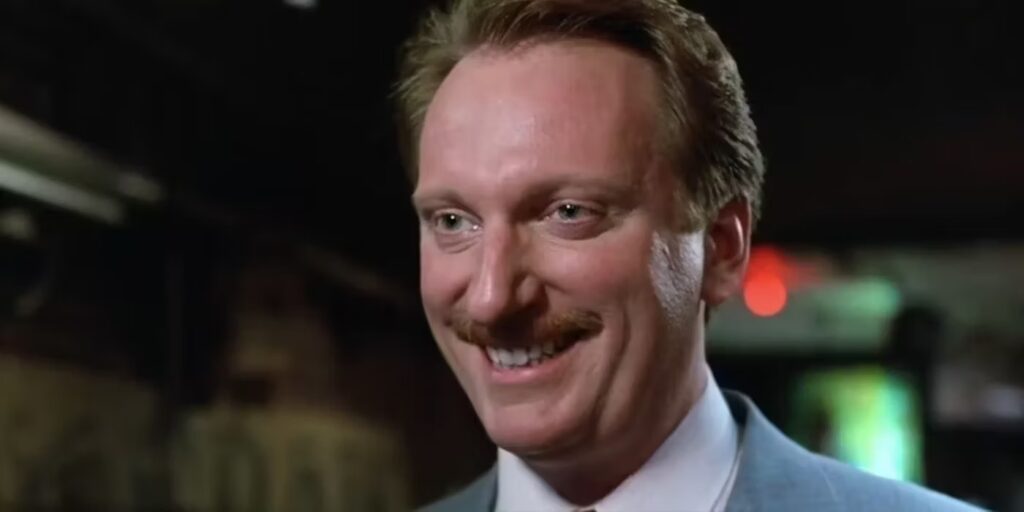
'Ferris Bueller's Day Off' (1986)
This character serves as a guide or teacher to the hero, providing them with advice, training, or magical assistance. The mentor is often a wise or experienced figure, although there have been literary and cinematic variances.
Look no further than the likes of Obi-Wan Kenobi ( Star Wars ), Yoda ( The Empire Strikes Back ), Mr. Miyagi ( The Karate Kid ), and Gandalf ( The Lord of the Rings series ) as core examples of the mentor.
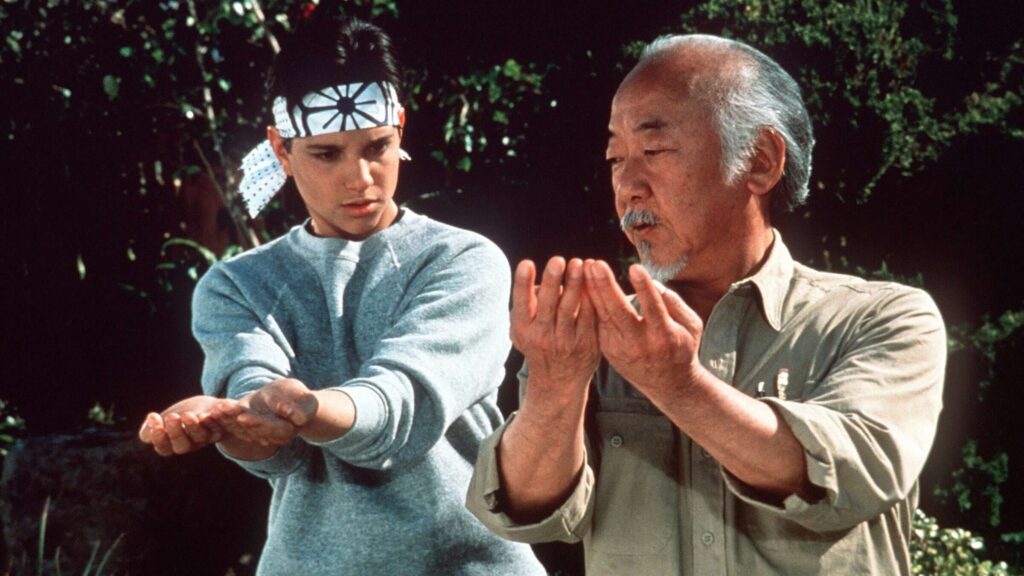
'The Karate Kid' (1984)
Allies are friends or companions who support and accompany the hero through their journey. They often complement the hero's skills and help them face challenges.
In Star Wars , the allies of Luke Skywalker include Han Solo, Chewbacca, and the droids. In The Lord of the Rings series , the fellowship companions of Frodo encompass this character archetype. You can also look to any sidekick-type character as the perfect example of an ally:
- Goose in Top Gun
- Patrick in Spongebob Squarepants
- Ron in Harry Potter
- Billy in Big
- Julie in Lady Bird
- Rod in Get Out
- Ned in the Spider-Man movies
- Sam in The Lord of the Rings
- Short Round in Indiana Jones and the Temple of Doom
Allies can also be characters who aren’t as close to the hero but offer some type of help along the way.
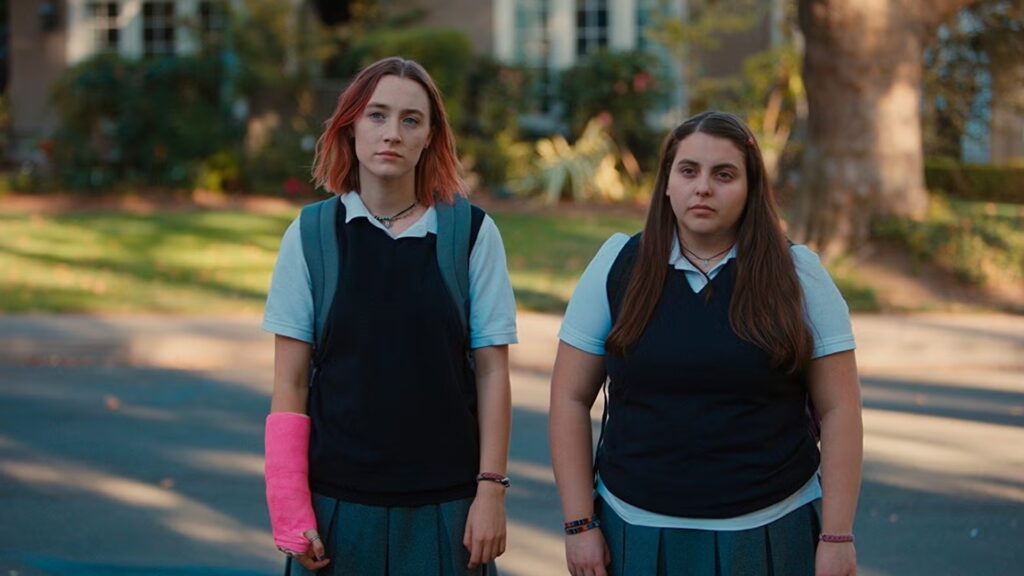
'Lady Bird' (2017)
The Threshold Guardian
These characters serve as obstacles the hero must overcome or circumvent on their journey. They are not always enemies but are present within the story to test the hero and give them the belief and ability to continue on their adventure.
Little John in the Robin Hood stories is initially the threshold guardian of the Sherwood Forest.
He eventually becomes an ally to Robin. But he’s initially a threshold guardian.
You can turn to Monthy Python and the Holy Grail as well. The Black Knight isn’t necessarily King Arthur’s foe. However, he’s there to defend the bridge at all costs.
The Herald
The herald is the character that initiates the call to adventure, pushing the hero to action, or providing the news or event that triggers their journey.
In Star Wars , R2-D2 is the herald of Luke’s journey because he delivers the message from Princess Leia to him . If Luke doesn’t see that message, he doesn’t show it to Obi-Wan Kenobi. And if Obi-Wan doesn’t see that message, he doesn’t convince Luke to come with him to join the Rebellion.
In Barbie , Weird Barbie is the one who tells Barbie the truth about what she is going through and what she must do to seek out the answers she needs.
The herald can be a major character, a supporting character, or even a minor character. In The Lord of the Rings , Gandalf is both mentor and herald, as he is the one who appears to Frodo, telling him he must bring the ring to Mordor.
The Shapeshifter
This archetype's loyalty and role are often unclear, and they can serve as an ally or an enemy to the hero. Sometimes both. Their unpredictable nature adds complexity to the story, usually resulting in twists and turns within the plot.
Snape in the Harry Potter series is one of the greatest shapeshifters in literature and film. His motives are unknown, mistaken, and hidden. He acts as both a shadow to Harry and later an ally.
Jack Sparrow in the Pirates of the Caribbean series is another great example, embodying the role of an unpredictable ally whose loyalty is often questionable. Yes, he can be looked upon as an antihero protagonist of the movie. However, the clear hero of the story is Will.
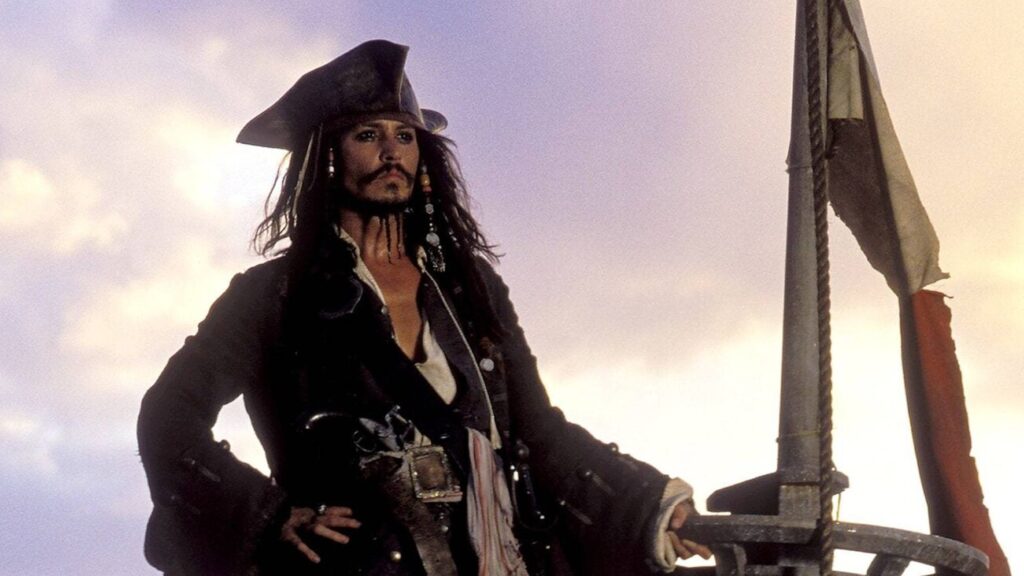
'Pirates of the Caribbean: The Curse of the Black Pearl' (2003)
The Trickster
The trickster usually adds levity to the story through comic relief. They can be allies or enemies, but typically they cause trouble for both.
Jack Sparrow falls under this character archetype as well. But a better example may be Loki in the Marvel Cinematic Universe movies. He embodies the definition of a trickster. He brings more comic relief to the movies after his initial first appearance in Thor .
Perhaps the better example would be Genie in Disney's Aladdin . He uses his powers for humorous and unexpected effects, often bending the rules and adding a lighthearted element to the story.
Tempter/Temptress
This archetype can be of any gender and represents temptation or distraction that diverts the hero from their path.
Catwoman in the Batman movies often plays the role of a temptress to Batman, combining allure with a morally ambiguous character.
Many of the Bond Girls in the James Bond films serve as temptresses, combining allure and mystery and often leading Bond into dangerous situations.
The Indiana Jones variation would be Elsa from Indiana Jones and the Last Crusade .
One of the best examples of the Tempter playing a more pivotal role in the story is Avery Tolar in The Firm . He’s a senior partner at the law firm Bendini, Lambert & Locke. His role is crucial in seducing the protagonist, Mitch McDeere, into the luxurious and corrupt world of the law firm.
He has a charismatic and persuasive personality. He mentors Mitch and exposes him to the high-stakes, high-reward lifestyle that the firm offers, including wealth, prestige, and power. Tolar's character is complex. He is a nuanced character who embodies the charm and allure that the firm uses to entice and trap its young associates.
His influence on Mitch is significant, as he represents the allure of success and the moral compromises that often accompany it. Tolar's character effectively demonstrates how the tempter archetype can be used to explore themes of corruption, temptation, and ethical dilemmas in a narrative.
The character archetypes found within the h ero’s journey offer writers the ability to take universal character templates and mold them to fit into stories that embrace the monomyth structure or use it as a starting point to tell a compelling and engaging story.
Use them in whatever way you’d like. They can encompass the more traditional definition within your story, or you can use these archetypes to set up expectations and later subvert those expectations to create a more enthralling and surprising plot.
Read More: Is Joseph Campbell's "The Hero's Journey" Dead in Screenwriting Today?
CHECK OUT OUR PREPARATION NOTES SO YOU START YOUR STORY OFF ON THE RIGHT TRACK!

Ken Miyamoto has worked in the film industry for nearly two decades, most notably as a studio liaison for Sony Studios and then as a script reader and story analyst for Sony Pictures.
He has many studio meetings under his belt as a produced screenwriter, meeting with the likes of Sony, Dreamworks, Universal, Disney, Warner Brothers, as well as many production and management companies. He has had a previous development deal with Lionsgate, as well as multiple writing assignments, including the produced miniseries Blackout, starring Anne Heche, Sean Patrick Flanery, Billy Zane, James Brolin, Haylie Duff, Brian Bloom, Eric La Salle, and Bruce Boxleitner, the feature thriller Hunter’s Creed, and many Lifetime thrillers. Follow Ken on Twitter @KenMovies and Instagram @KenMovies76
Get Our Screenwriting Newsletter!
Get weekly writing inspiration delivered to your inbox - including industry news, popular articles, and more!
Facebook Comments
Free download.

Screenwriting Resources:
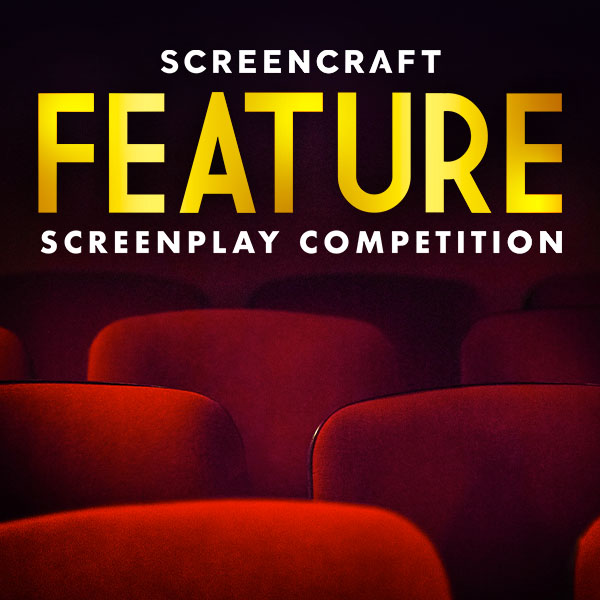
$ 15.00 Original price was: $15.00. $ 12.00 Current price is: $12.00. Add to cart
Popular Posts

Recent Posts
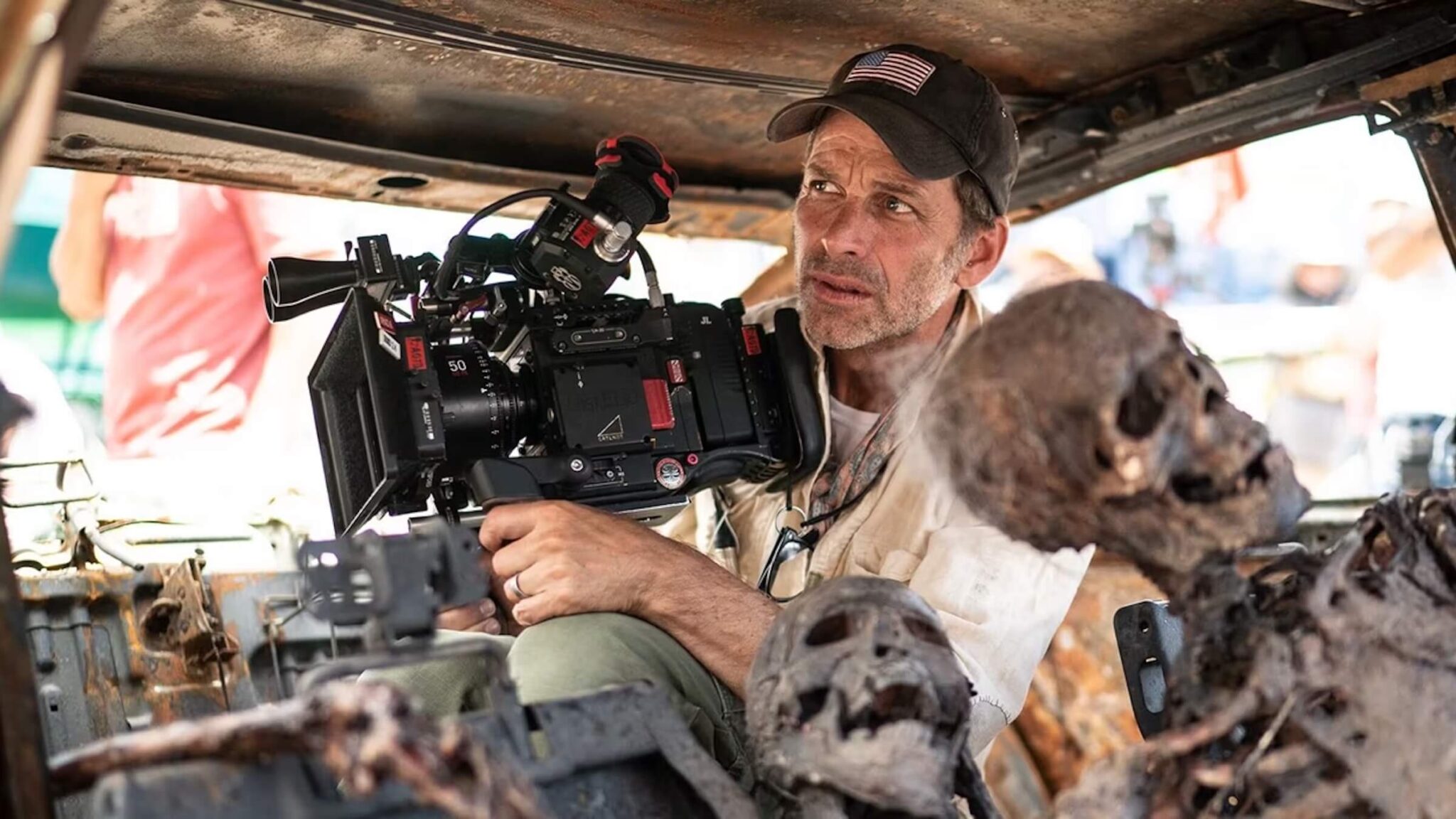
Next Related Post
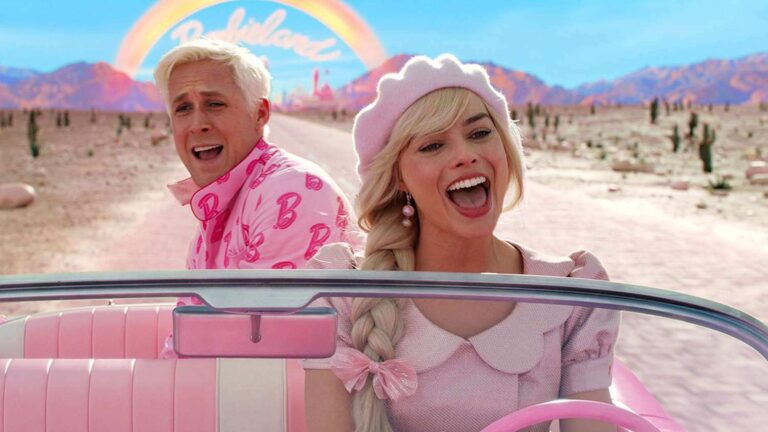
Get Our Newsletter!
Developing your own script.
We'll send you a list of our free eCourses when you subscribe to our newsletter. No strings attached.
You Might Also Like
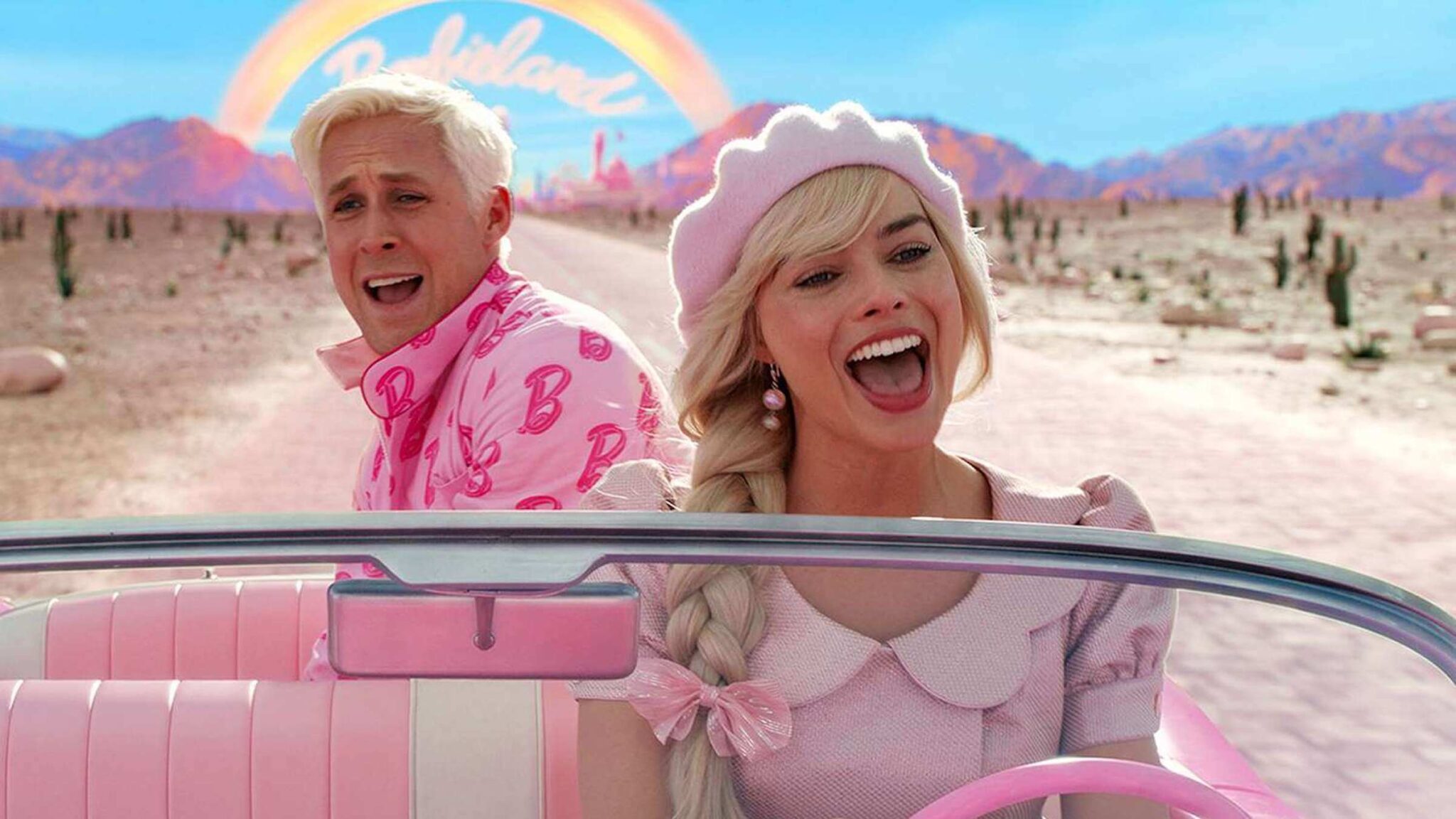
- Hidden Name
- Phone This field is for validation purposes and should be left unchanged.
Connect With Us
Writing competitions, success stories.
© 2024 ScreenCraft | An Industry Arts Company
Wait! Subscribe to get our free Newsletter
Join our community of over 100,000 screenwriters and get weekly inspiration delivered to your inbox.

Screenwriting Newsletter
Join our community of over 100,000 screenwriters and get weekly inspiration delivered to your inbox:
✓ Popular blog posts and industry news ✓ New ScreenCraft online events ✓ Screenplay competition announcements!
" * " indicates required fields

Competitions
The hero’s journey breakdown: the matrix.
By Ken Miyamoto · November 27, 2019

How does The Matrix follow Joseph Campbell’s Hero’s Journey breakdown?
Welcome to another installment of our new series A Hero’s Journey Breakdown where we explore Joseph Campbell’s mythological storytelling structure and how iconic films fit into that mold.
Christopher Vogler’s approach to Campbell’s structure broke the mythical story structure into twelve stages. For this series, we define the stages in simplified interpretations:
- The Ordinary World : We see the hero’s normal life at the start of the story before the adventure begins.
- Call to Adventure : The hero is faced with an event, conflict, problem, or challenge that makes them begin their adventure.
- Refusal of the Call : The hero initially refuses the adventure because of hesitation, fears, insecurity, or any other number of issues.
- Meeting the Mentor : The hero encounters a mentor that can give them advice, wisdom, information, or items that ready them for the journey ahead.
- Crossing the Threshold : The hero leaves their ordinary world for the first time and crosses the threshold into adventure.
- Tests, Allies, and Enemies : The hero learns the rules of the new world and endures tests, meets friends, and comes face-to-face with enemies.
- The Approach : The initial plan to take on the central conflict begins, but setbacks occur that cause the hero to try a new approach or adopt new ideas.
- The Ordeal: Things go wrong and added conflict is introduced. The hero experiences more difficult hurdles and obstacles, some of which may lead to a life crisis.
- The Reward : After surviving The Ordeal, the hero seizes the sword — a reward that they’ve earned that allows them to take on the biggest conflict. It may be a physical item or piece of knowledge or wisdom that will help them persevere.
- The Road Back : The hero sees the light at the end of the tunnel, but they are about to face even more tests and challenges.
- The Resurrection : The climax. The hero faces a final test, using everything they have learned to take on the conflict once and for all.
- The Return : The hero brings their knowledge or the “elixir” back to the ordinary world.
Here we turn to The Matrix .
Download the script!
Note: As with any application of story structure or formula, this is just a hindsight interpretation and implementation of The Hero’s Journey to this cinematic tale. There can and will be variances.
Read More: Hasta La Vista, Baby: The Best 90s Action Movies
The Ordinary World
Neo is a computer hacker by night and a corporate computer programmer named Thomas Anderson by day.
He hates his job and he’s constantly in search of something, believing that something is off about the world he’s living in.
Call to Adventure
Text on Neo’s computer screen tells him that if he wants to learn more about The Matrix, he should follow the white rabbit. Someone suddenly knocks on his door. It’s a customer for his under-the-table hacking business. They ask him out to go clubbing.
Refusal of the Call
Neo refuses the invite — until he sees the white rabbit tattoo on his customer’s girlfriend. He remembers the text on his computer screen and follows the rabbit.
Later, at the club, Neo meets Trinity. She explains that he’s in danger. He silent, not fully knowing whether or not he should believe in what he’s being told. It’s clear that he’s hesitant to fall into the rabbit’s hole of the story she is telling him.
Meeting the Mentor
Neo goes to work the next day. He’s berated by his boss. Suddenly, while in his cubicle, a package is delivered. It’s a phone. When it rings, he answers. Morpheus is on the other line. He tells Neo that he’s in danger and someone is coming after him. He looks up and sees Agent Smith, his partner, and police officers.
Morpheus guides him to the window and insists that he open it and escape outside, multiple stories high. Neo refuses and is caught.
Crossing the Threshold
Neo is taken to Morpheus. Morpheus offers him the chance to choose between the truth about the Matrix or living in ignorance. Neo chooses the truth, takes the pill, and is awakened in the real world.
Tests, Allies, and Enemies
Neo awakens and meets the crew of the Nebuchadnezzar . After he recuperates, he is put through training and tests as his skills are gauged by Morpheus’s crew.
After seeing Neo’s skill, Morpheus believes him to be the One, a powerful human prophesized to be the savior of humanity.
The Approach
Neo visits the Oracle. She tells him that despite Morpheus’s blind insistence, he’s not the One. She also informs him that Neo is going to have to choose between saving his own life, and the life of Morpheus.
The group is ambushed by Agents and tactical police.
Morpheus sacrifices himself so the rest of the crew can escape. He is taken hostage and interrogated by the Agents.
Neo decides to sacrifice himself to save Morpheus.
He and Trinty enter the Matrix to rescue him.
When they face off with one of the agents on the roof of the building where Morpheus is being interrogated, Neo tries to kill him with rapid-fire. The agent defies the physics of the Matrix and dodges his bullets. The agent then aims his weapon at Neo.
When the agent fires multiple bullets towards Neo, Neo somehow manages to dodge the bullets just as the agent had.
Neo gains confidence in his abilities and wonders if he truly is the One.
Morpheus is saved and he and Trinity escape the Matrix.
The Road Back
Cypher manages to exit the Matrix first. He then betrays and kills many crew members that lie defenseless within the real world. When Cypher is about to kill Neo, Tank, a surviving crewman, kills him.
As the ship is under attack within the real world, Neo is stuck within the Matrix. He’s forced to fight Agent Smith on his own, thinking that he’s powerful enough to do so.
He fails to kill Agent Smith and flees, looking for a way out of the Matrix.
The Resurrection
As Neo flees, Agent Smith ambushes him in an apartment, shooting him dead. As Neo dies, Trinity whispers into his ear outside of the Matrix. She tells him that he can’t be dead because he’s the One. And she knows he is because the Oracle told her that she would fall in love with the One. She kisses him.
Neo is revived.
He now has the power to perceive and control the Matrix. He defeats Agent Smith.
A call is made to the Matrix. It’s Neo sending a message that he’s going to awaken the humans trapped within the Matrix.
Neo is revealed to be back in the Matrix, walking anonymously through a crowd of people.
He’s the One. And it’s revealed that he has ultimate power within the Matrix as he suddenly flies into the sky, ready to wage war against the Matrix.
For all the latest from The Script Lab, be sure to follow us on Twitter , Facebook , and Instagram .
And become a member of TSL 360 to enjoy the LARGEST screenwriting education content library, featuring masterclasses, deep-dive interviews, and lectures from Academy Award-winning screenwriters, TV show-runners, producers, literary managers, agents, studio executives, and leading educators – all in one place.
Download Free Trending Scripts
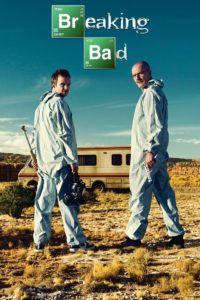
Breaking Bad

Mr. and Mrs. Smith
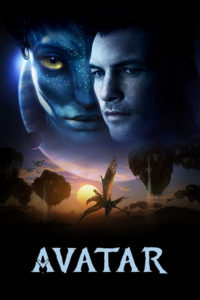
Inglourious Basterds
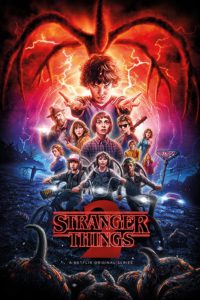
Stranger Things
Next related article.
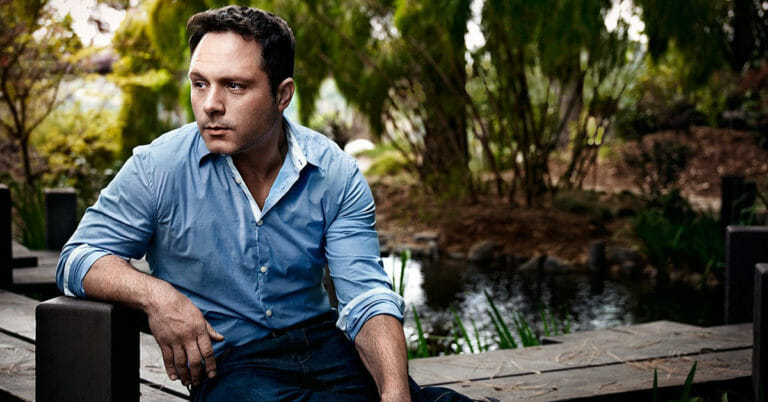
The Great Television Writers: Part 11 – Nic Pizzolatto
Martin Keady · November 27, 2019
Recent Articles
What are mumblecore movies 10 films that define the movement.
Ken Miyamoto · May 1, 2024
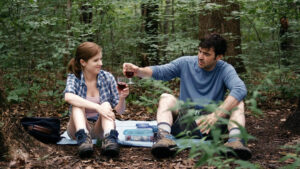
The Dark Side of Cinema: Uncover the Masterpieces of Film Noir
Ken Miyamoto from ScreenCraft · April 29, 2024
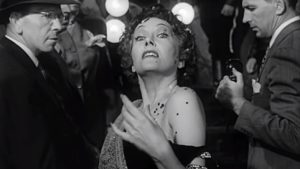
The 50 Greatest Screenwriters of All Time
Martin Keady · April 24, 2024

Shore Scripts Short Film Fund
Deadline: May 2nd, 2024
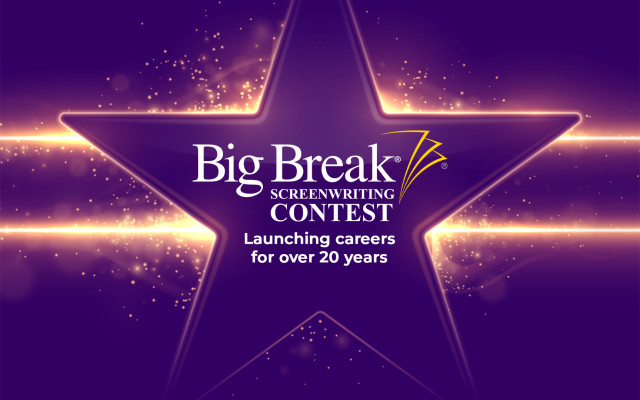
Deadline: May 20th, 2024

Script Pipeline Screenwriting Competition
Deadline: May 15th, 2024
More Related Articles
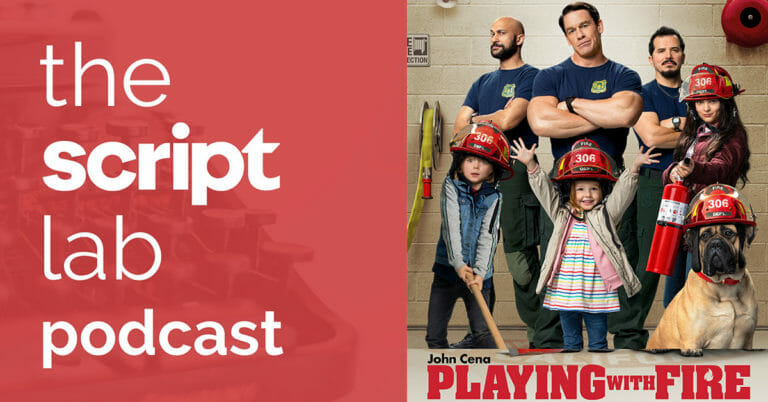
The Script Lab Podcast: Dan Ewen — Writer of PLAYING WITH FIRE
Shanee Edwards · December 4, 2019
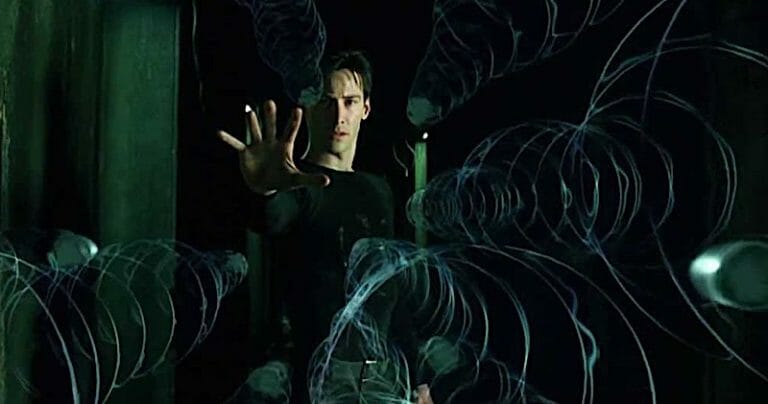
The Recipe for Writing Great Movie Endings
Ken Miyamoto · December 2, 2019

3 Secrets for Breaking Into Television
Ken Miyamoto · November 25, 2019
© 2024 The Script Lab - An Industry Arts Company
Sign up for the TSL Newsletter
and get $50 off Final Draft 12
Stay up to date on the latest scripts & screenwriting articles.
Featured Topics
Featured series.
A series of random questions answered by Harvard experts.
Explore the Gazette
Read the latest.
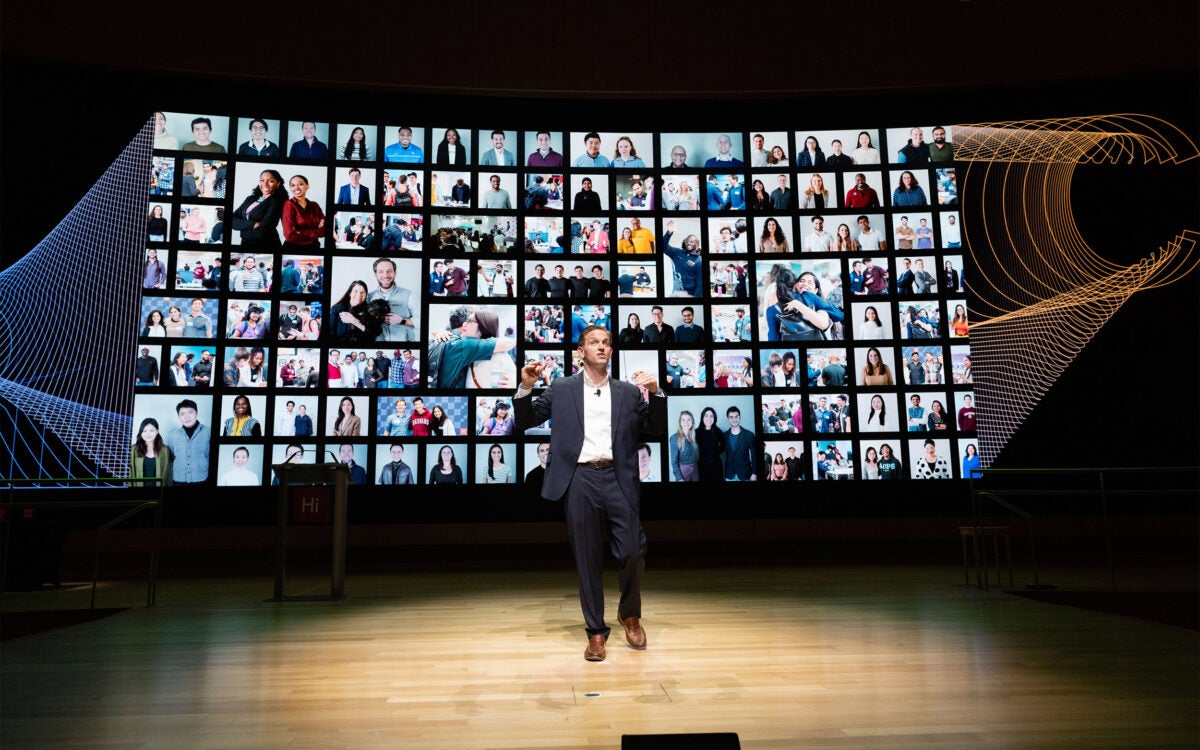
Turning ideas into impact
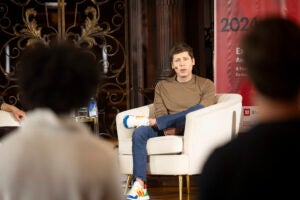
Did student or ChatGPT write that paper? Does it matter?

Colleagues, students remember Helen Vendler, a ‘titan’ of poetry criticism

Stephanie Mitchell/Harvard Staff Photographer
Bringing personal perspective to homeless care
Soon-to-be Med School grad’s family struggled in U.S. after fleeing war-torn Central America. He hasn’t forgotten.
Alvin Powell
Harvard Staff Writer
Part of the Commencement 2024 series
A collection of stories covering Harvard University’s 373rd Commencement.
In 2019, when David Velasquez heard that Massachusetts General Hospital was convening a working group on homelessness among its patient population, he wanted to help.
Alister Martin, an MGH Emergency Department resident, welcomed Velasquez, telling him there was plenty of work to go around and any willing hands were welcome. But as he listened to Velasquez’s story, Martin realized his new colleague not only brought passion to a tangled, societal-scale problem, but also valuable perspective: No one had to explain the challenges of poverty and homelessness to him.
“He told me his story, how he had struggled with homelessness. It was clear this was not just an academic issue to him,” said Martin, today an assistant professor of emergency medicine at Harvard Medical School. “It was clear. This is a guy coming in for the right reasons.”
Velasquez grew up in Southern California, the son of asylum seekers from war-torn Central America . He is graduating from the Medical School this spring after seven years on Harvard’s campuses. The first of his family to go to college, Velasquez was not satisfied with a single Harvard degree, or even two — he took a break between his third and fourth years at HMS to earn a master’s degree in public policy from the Harvard Kennedy School and one in business administration from Harvard Business School. The dual degrees, he said, are tools to extend his medical career beyond the clinic into policy and business with the aim of reforming a healthcare system too often inaccessible to those on society’s fringes.
When asked about his childhood, Velasquez describes a setting quite distant from the white marble and granite of the HMS quadrangle in Boston.
When his family arrived in the U.S. in 1993, they lived for a year in an East Los Angeles church that welcomed undocumented immigrants. Velasquez was born after that time, but his parents still struggled financially, limited by elementary school educations to low-paying jobs.
Velasquez remembers the family losing their home in 2009 and the six of them — his parents, three brothers, and himself — living in a motel. He also remembers his father standing outside a Southern California Home Depot in hopes a contractor would give him a day’s work and his mother, whom he counts as one of his heroes, working constantly cleaning people’s homes.
Despite his parents’ commitment to hard work, money was always short and healthcare a luxury. He recalls his father once making the difficult decision not to take Velasquez’s sick mother to the doctor because he needed the gas to get to work the next day.
Having a son at Harvard hasn’t proven a shield from life’s financial pressures.
In 2019, money ran out and his mother and father had to give up their home and move into a motel for several weeks. Later that same year, his father had a heart attack, which he survived but which generated a $120,000 medical bill.
Velasquez helped the family navigate that difficulty, consulting lawyers in Boston who counseled that they insist the hospital abide by California requirements that its hospitals provide free care to those who can’t afford it. Velasquez flew home after his OB/GYN rotation that year to talk to hospital administrators and handle the paperwork.
“There were many times when my parents got sick, and they never went to the doctor because my dad needed the gas the next day to go to work,” said Velasquez, who in June starts his internal medicine residency at Brigham and Women’s Hospital. “There were neighbors having legs amputated because of uncontrolled diabetes and so forth. That ultimately taught me that there’s a bigger problem here that I need to understand and think about.”
Velasquez’s parents’ journey to the U.S. started in Nicaragua in the late 1970s when his father, at age 19, began fighting against the dictatorial regime of the Somoza family, which had ruled Nicaragua for decades. In 1983, he picked up arms again, joining the Contras in opposition to the Sandinista government, which had taken over.
After the war ended with the 1990 election of Violeta Chamorro, his father left the country out of concerns for his own safety, eventually traveling to Mexico where he met Velasquez’s mother. In 1993, wanting a better future, they came to the U.S. seeking asylum because they were not able to return to Nicaragua. It took eight years, but the request was eventually granted.
Velasquez began college at the University of Southern California, planning to become an engineer. The transition to college was nearly overwhelming, and he wrestled with doubts, considering dropping out during his first year.
“I almost dropped out of my first semester, not because of academic reasons, but because I didn’t believe in myself,” Velasquez said, adding that he uses that experience today when he talks to students from similar backgrounds. “Kids that come from nontraditional backgrounds don’t necessarily believe in themselves and have confidence in themselves. I often tell students two things: ‘You can do it,’ and ‘but not alone.’”
Velasquez credits his success so far to the support of many around him. In addition to his family, friends, and classmates at Harvard, several mentors — including Martin — have provided valuable examples, opportunities, and advice.
Velasquez reconnected with Martin during the pandemic in GOTVax, an effort to bring COVID-19 vaccines to communities where the need was greatest. Martin was an organizer of the effort, and Velasquez ran its East Boston branch, helping deliver 1,000 vaccines to people in the community.
Later, in 2021-22, when Martin was a White House Fellow, he organized a round table on healthcare access and tapped Velasquez to be the panel’s only student participant.
“He’s incredibly driven and passionate, but underneath he is really warm and funny,” Martin said of Velasquez. “The thing that really surprised me was just how effective he was right off the bat, how people really loved working with him and how well he fit in.”
Velasquez’s mentors haven’t been limited to faculty members. When he was 19 and an intern at Glendale Adventist Medical Center, a nurse named Matt helped him through a key experience: his first time performing CPR on a patient whose heart had stopped and whom they eventually revived.
At just 19, the idea that he could impact someone else’s life in such a profound way nudged Velasquez further from his engineering path and fed a budding interest in medicine.
“The patient comes in — no pulse — and we started CPR. I go second, and we keep going back and forth. He regained a pulse five, seven times and ultimately was resuscitated,” Velasquez said. “I remember coming home and talking with my roommate about how, if I, as a 19-year-old without many skills, could contribute in some way to helping that patient come back to life, how much one could do with the field of medicine?”
Share this article
Also in this series:.
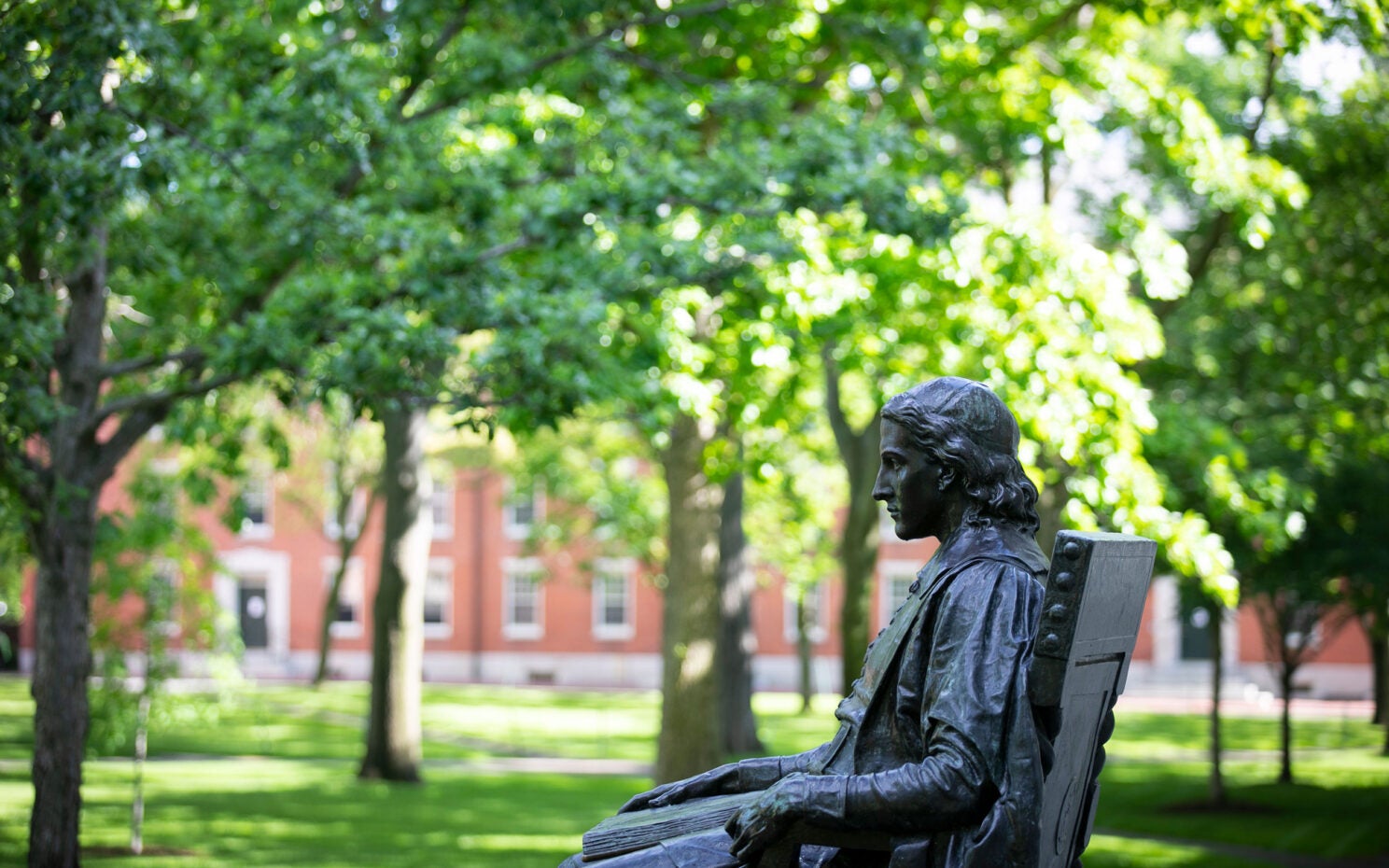
Three will receive 2024 Harvard Medal
In recognition of their extraordinary service

When math is the dream
Dora Woodruff was drawn to beauty of numbers as child. Next up: Ph.D. at MIT.

A fresh take on must-see TV
Isabella Madrigal has a vision: storytelling that’s compelling, inspires better, more equitable world
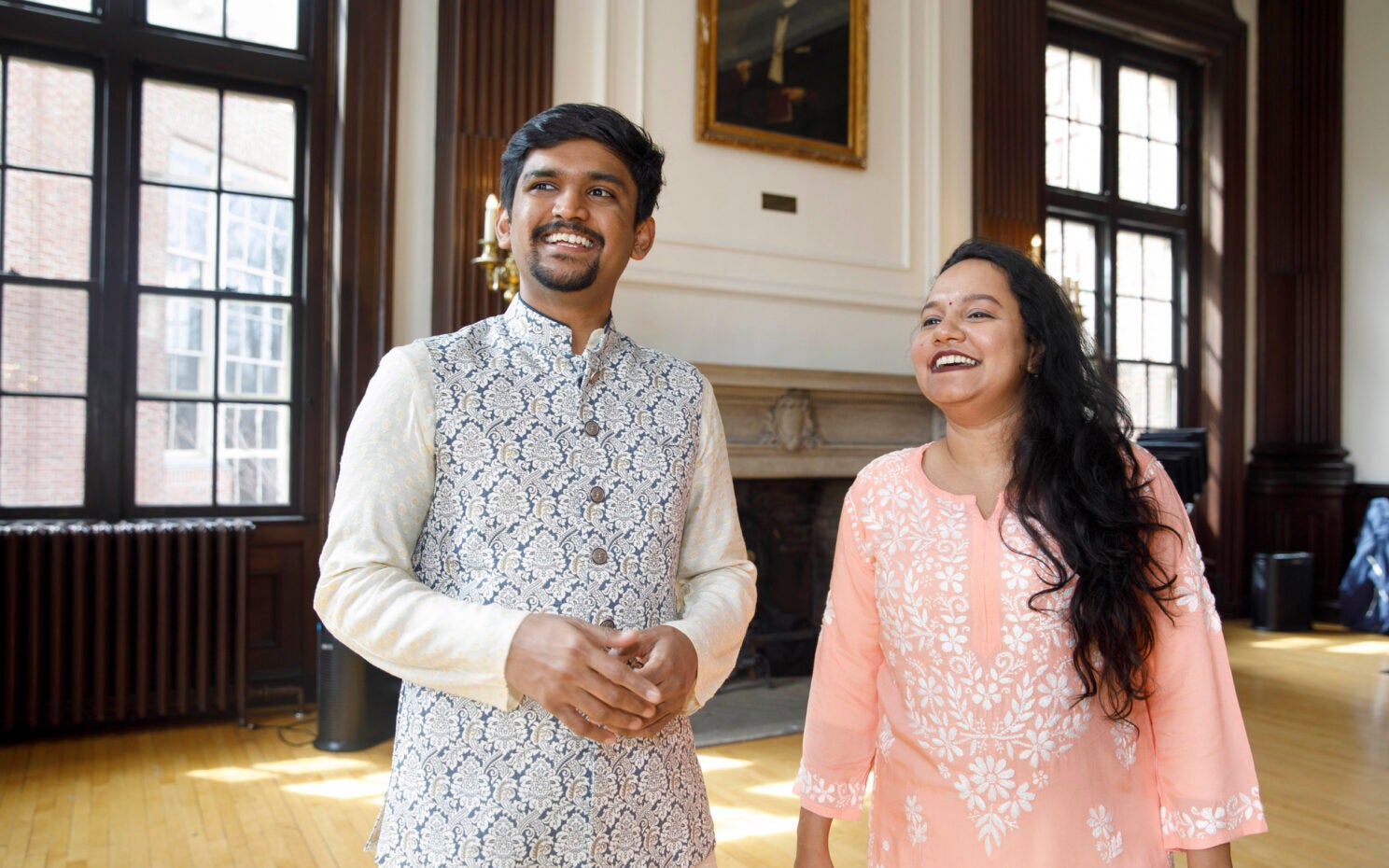
When your soulmate’s a classmate
Husband and wife — both pursuing master’s degrees at Harvard — merge love for education to help students in India
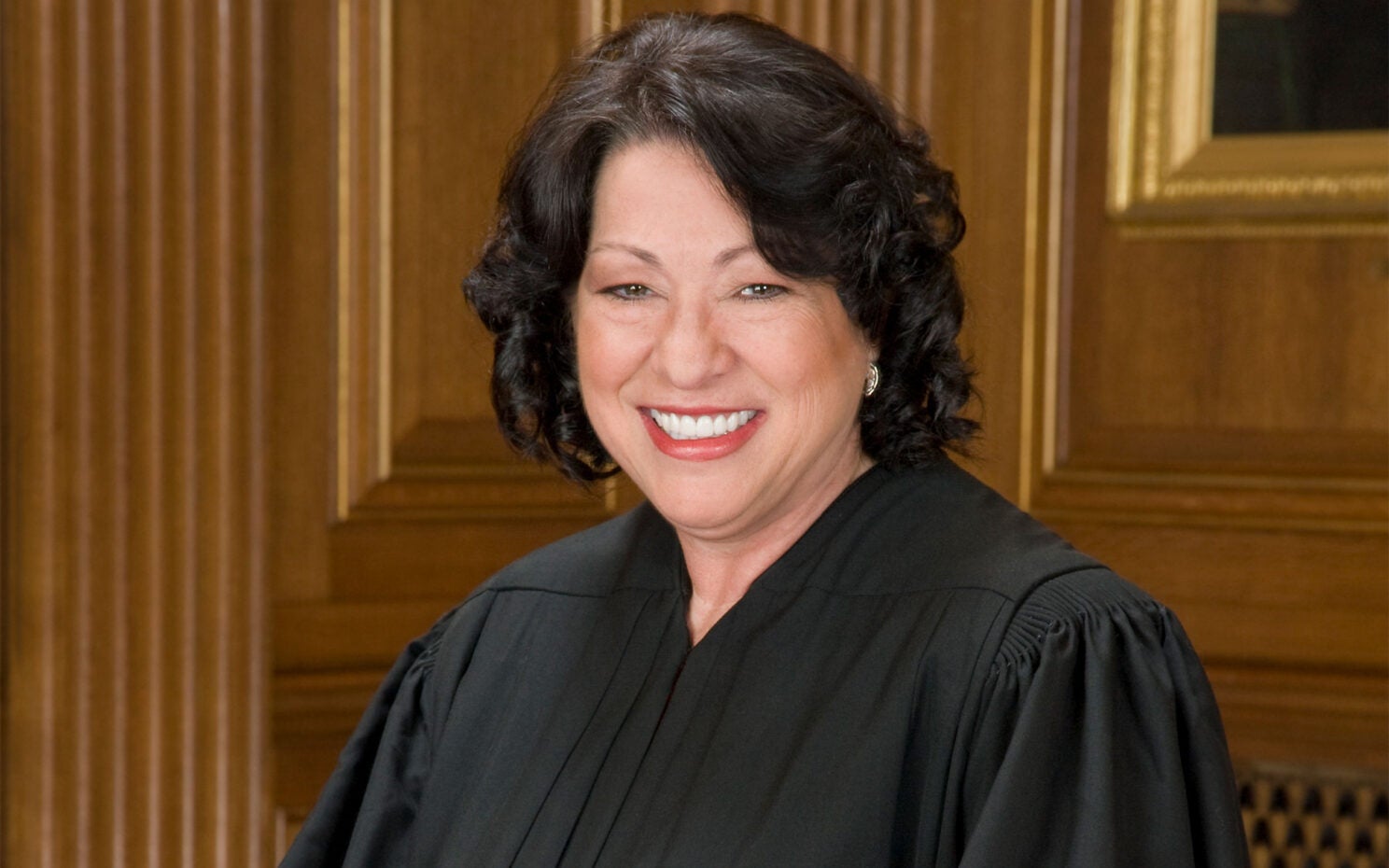
Sonia Sotomayor to receive 2024 Radcliffe Medal
Associate justice of U.S. Supreme Court honored for her work as a fearless and compassionate jurist

Maria Ressa named 2024 Commencement speaker
Nobel Prize-winning defender of press freedom will deliver principal address
You might like
Startup founders inspire global audience at 2024 Harvard President’s Innovation Challenge Awards ceremony
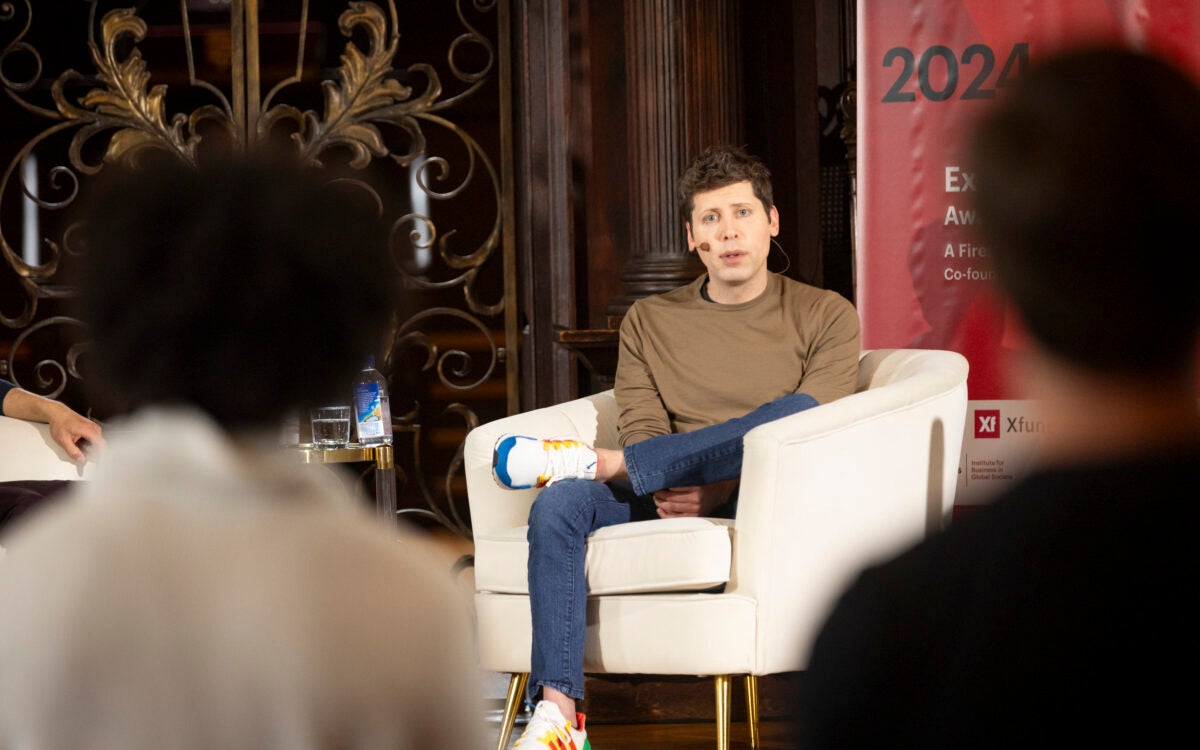
Sam Altman, CEO of firm that developed app, says ethics do matter, but they need to be rethought (and AI isn’t going away)
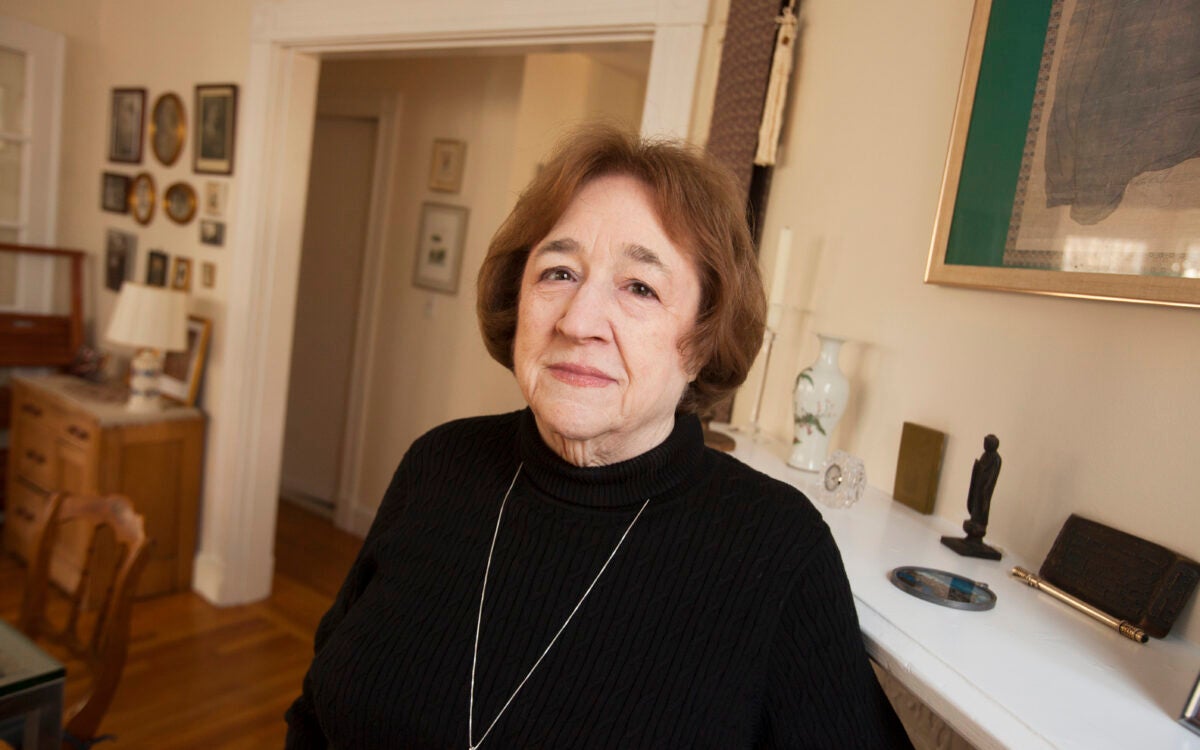
Beyond her passion for her work, they say, she was creative and engaged teacher, thoughtful adviser and mentor, trusted friend
How old is too old to run?
No such thing, specialist says — but when your body is trying to tell you something, listen
Alcohol is dangerous. So is ‘alcoholic.’
Researcher explains the human toll of language that makes addiction feel worse
- Cast & crew
- User reviews
Unsung Hero

Based on a remarkable true story, a mum's faith stands against all odds and inspires her husband and children to hold on to theirs. Based on a remarkable true story, a mum's faith stands against all odds and inspires her husband and children to hold on to theirs. Based on a remarkable true story, a mum's faith stands against all odds and inspires her husband and children to hold on to theirs.
- Richard L. Ramsey
- Joel Smallbone
- Richard Ramsey
- Daisy Betts
- Kirrilee Berger
- 44 User reviews
- 20 Critic reviews
- 46 Metascore

- Helen Smallbone

- David Smallbone

- Rebecca Smallbone

- Eddie Degarmo

- Jed Albright

- Kay Albright

- Daniel Smallbone

- Luke Smallbone

- Ben Smallbone

- Josh Smallbone

- Luanne Meece

- Art Meriweather

- Nana Smallbone

- Church Usher

- Southern Wife

- All cast & crew
- Production, box office & more at IMDbPro
More like this

Did you know
- Trivia On the last day of shooting after the concert scene for Rebecca, For King and Country put on a full concert for all the extras and crew.
- Goofs All entries contain spoilers
Jed Albright : I wish I had an accent.
- Connections Featured in The Michael Knowles Show: God vs Hollywood: For King & Country with Michael Knowles (2024)
Technical specs
- Runtime 1 hour 53 minutes
Related news
Contribute to this page.

- See more gaps
- Learn more about contributing
More to explore

Recently viewed

COMMENTS
The Hero's Journey: Tangled Presented By: Rachel Wilson The Ordinary World In this story, the ordinary world is Rapunzel's tower. As a child, Rapunzel was kidnapped from her home in the castle, and locked int the tower so that her "mother" can use the healing powers of her magic
In the Hero's Jouney, the are three main parts: the departure, the initiation, and the return along with some subparts. The Departure. Unusual birth: The queen of Corona was pregnant with Rapuzel and got very sick so they brought her a flower that had magical healing powers; Rapuzel was born with magical hair that healed, made people younger, and glowed when she sang a special song
The Hero's Journey or The Wanderer Dream: Tangled perspectives in Embrace of the Serpent. ... Described by him, the Hero's Journey is a recurring story which follows a single narrative pattern: "A hero ventures forth from the world of common day into a region of supernatural wonder: fabulous forces are there encountered and a decisive ...
In the hero's journey, the meeting with the goddess is described as the point in the story where the hero experiences an unconditional love. In Tangled, this happens in the song "I See The Light". In this particular scenario, the "meeting with the goddess" happens entirely inside of Rapunzel. In this song, she realizes that she loved Flynn all ...
The part of Tangled that represents crossing the threshold in the hero's journey is when Rapunzel finally leaves her tower to begin her adventure to see the floating lanterns.She knows nothing of what she'll encounter and what will test her but she crosses into the dangerous outside world blindly. In the movie, Rapunzel is crossing a literal "threshold", so it is obvious that it is this part ...
But, the hero's journey only increases its level of danger over time! So, the goddess tries to persuade the hero to stop the journey. Maybe the goddess tries to get the hero to run away together, ignore the troubles of the world and start a new life somewhere. Maybe the goddess tries to convince the hero that the hero has nothing to prove to ...
The approach encompasses all the final preparations for the ordeal. It brings the hero to the stronghold of the opposition, where she needs to use every lesson she has learned. Dorothy and her friends, Scarecrow, Tin Man, and Cowardly Lion face a series of obstacles, enter a second special world (Oz) with its own unique guardians and rules, and ...
The hero's journey can be found in books like Harry Potter, Lord of the Rings, The Chronicles of Narnia, and most other fantasy sci-fi books, legends, fairy tales, and comic book series like Spiderman and Batman. Many video games like The Legend of Zelda, Skyrim, the Final Fantasy and even the Pokémon series carry many elements of the hero ...
Once our hero has cheated death during the ordeal and has seized the sword, the much sought-after prize is hers. The prize of the hero's journey can be an actual object, like a holy grail, or it can mean the knowledge and experience that lead to greater understanding and reconciliation. Sometimes the reward is love.
The Hero's Journey: Crossing the Threshold. The hero, armed with the mentor's gifts, agrees to face the journey. This is the turning point between Act One and Act Two, the crossing from the ordinary world into the special world. The hero is wholeheartedly committed and there is no turning back. According to Christopher Vogler's The Writer's ...
The Hero's Journey or The Wanderer Dream: Tangled perspectives in Embrace of the Serpent Tales of adventure and exploration in the jungle have long captured the Western imagination. Sailing down river from familiarity into mystery is a typical story which provides a perfect frame for the Hero's Journey, a structure of myth popularised by ...
Illustration of the hero's journey. In narratology and comparative mythology, the hero's journey, also known as the monomyth, is the common template of stories that involve a hero who goes on an adventure, is victorious in a decisive crisis, and comes home changed or transformed.. Earlier figures had proposed similar concepts, including psychoanalyst Otto Rank and amateur anthropologist Lord ...
The Hero's Journey is a narrative pattern identified by Joseph Campbell, most notably outlined in his book The Hero with a Thousand Faces . This pattern of adventure and transformation is a universal one that runs through all kinds of mythic traditions across the world. Christopher Vogler has si
Christopher Vogler's Interpretation of the Hero's Journey. When Christopher Vogler, a development executive and screenwriter at Disney, was inspired by Joseph Campbell's concept of the story monomyth, he crafted a seven-page memo for Disney's development team and incoming screenwriters. This memo, A Practical Guide to Joseph Cambell's The Hero with a Thousand Faces, laid the groundwork for ...
This film is an exploration of famed Mythologist Joseph Campbell's studies and their continuing impact on our culture.Through interviews with visionaries from a variety of fields interwoven with enactments of classic tales by a sweet and motley group of kids, the film navigates the stages of what Campbell dubbed The Hero's Journey: the challenges, the fears, the dragons, the battles, and the ...
Neo decides to sacrifice himself to save Morpheus. He and Trinty enter the Matrix to rescue him. When they face off with one of the agents on the roof of the building where Morpheus is being interrogated, Neo tries to kill him with rapid-fire. The agent defies the physics of the Matrix and dodges his bullets.
Velasquez's parents' journey to the U.S. started in Nicaragua in the late 1970s when his father, at age 19, began fighting against the dictatorial regime of the Somoza family, which had ruled Nicaragua for decades. In 1983, he picked up arms again, joining the Contras in opposition to the Sandinista government, which had taken over.
Unsung Hero: Directed by Richard L. Ramsey, Joel Smallbone. With Daisy Betts, Joel Smallbone, Kirrilee Berger, Jonathan Jackson. Based on a remarkable true story, a mum's faith stands against all odds and inspires her husband and children to hold on to theirs.